Take Me to the Recipes
Forget bland and boring! Czech Food: is a vibrant tapestry of hearty flavors, rich stews, and sweet surprises. But what exactly shaped this unique culinary landscape?
Embark on a delicious exploration of the Czech food scene, where we’ll discover how history, geography, and climate have all come together to create a truly unforgettable dining experience.
From hearty Central European stews to Asian influences whispered on the wind of the Silk Road, get ready to tantalize your taste buds and delve into the fascinating story behind every Czech bite!
Take Me to the Recipes
10 Takeaways from this Article About Czech Cuisine
Czech Cuisine: A Crossroads of Flavor
Czech Republic’s cuisine isn’t a one-trick pony. History has woven a tapestry of influences, from hearty Central European stews to Asian whispers from the Silk Road.
Geography Shapes the Plate
Mountains, rolling plains, and fertile river valleys all contribute to the diverse ingredients that grace Czech tables.
Climate Cues the Menu
Hot summers bring fresh salads and cold soups, while hearty stews and dumplings warm you up during chilly winters.
Dumplings Rule!
Get ready for knedlíky, delectable dumplings in savory and sweet varieties, a true staple of Czech cuisine.
Beer is King
The Czech Republic boasts a long and proud brewing tradition, with lagers like Pilsner Urquell quenching thirsts for centuries.
Sweet Endings
Czechs have a serious sweet tooth! Indulge in pastries like kolaches and fluffy buchty, a delicious way to end a meal.
Hearty Meat Dishes
From succulent roasts to flavorful goulash, Czech cuisine celebrates meat i a variety of comforting dishes.
Soups for All Seasons
Nourishing soups like kulajda (dill soup) and česnečka (garlic soup) are a mainstay of Czech meals.
Spice it Up (a Little)
While not known for fiery flavors, Czech cuisine does incorporate spices like paprika and caraway for a subtle kick.
Local and Seasonal Focus
Fresh, seasonal ingredients are king in Czech cooking, ensuring a connection to the land and a celebration of local bounty.
Where is Czechia?

Czechia (The Czech Republic, Czech: Česká republika, short form in Czech: Česko), also known as Czechia, is a landlocked country in Central Europe. The country borders Poland to the northeast, Germany to the west, Austria to the south, and Slovakia to the east.

Index to the Contents
- Take Me to the Recipes
- More articles
- 10 Interesting Facts about Czechia (Czech Republic)
- Czechia’s (Czech Republic) History and the Effect It Has Had on the Cuisine
- How Czechia’s (Czech Republic) Climate and Geography has Influenced the Cuisine
- Understanding the Essence of Czech Cuisine
- Exploring Czech Ingredients: The Flavors of Croation Cuisine
- Czechia’s National Food
- Exploring Czech Street Food
- The Most Popular Czech Recipes
- How Healthy is Czech Food?
- Czech Cuisine Recipes to Try at Home
- Conclusion
- FAQ’s
More Articles for Your Pleasure
- North and South American Cuisine – A Culinary Expedition
- European Cuisine: Savor the Continent’s Best Culinary Secrets!
- African Cuisine: Discover the Bold Flavors & Global Charm!
- Asian Cuisine Unlock its Secrets – Taste, Health & Global Influence!
- Oceania Cooking: A Culinary Journey Through the Pacific
- Caribbean Cuisine: Beyond Jerk Chicken
- Middle Eastern Food: A Flavor Journey
Savor iconic Czech Food Dishes – Click on each tantalizing picture to open up the Recipe


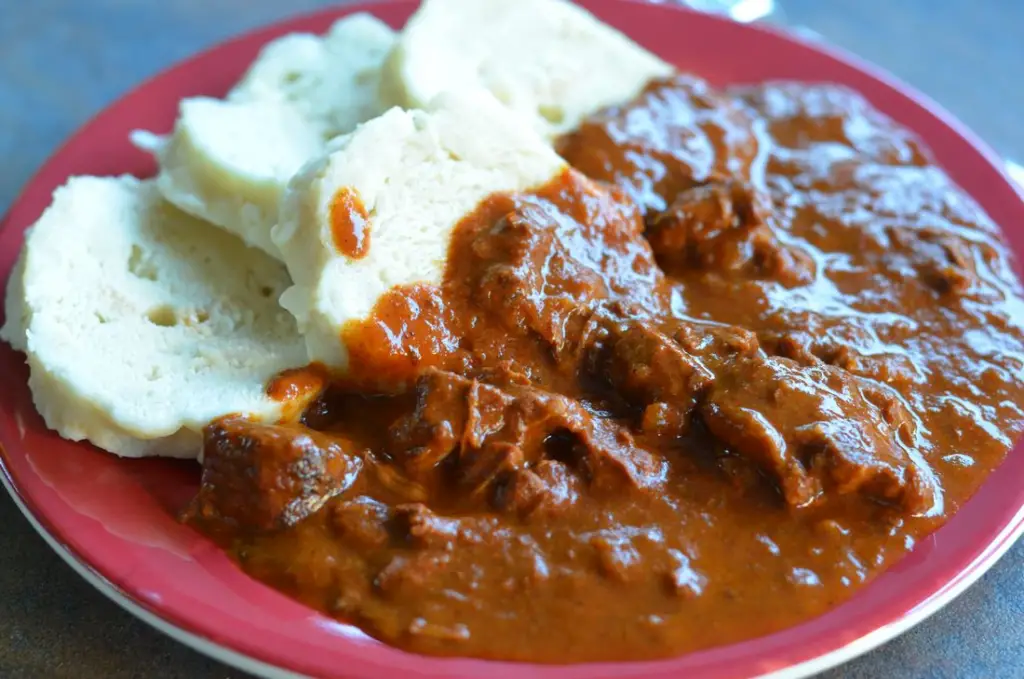
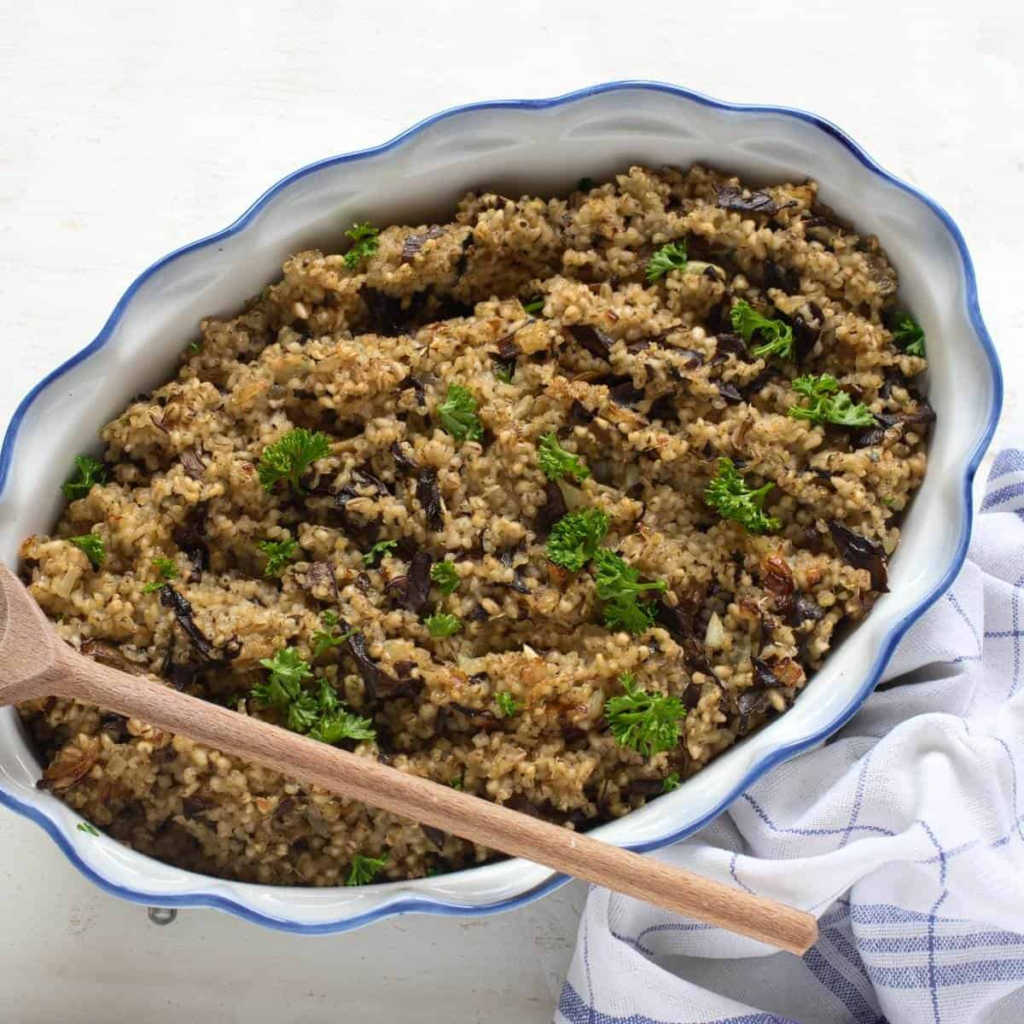
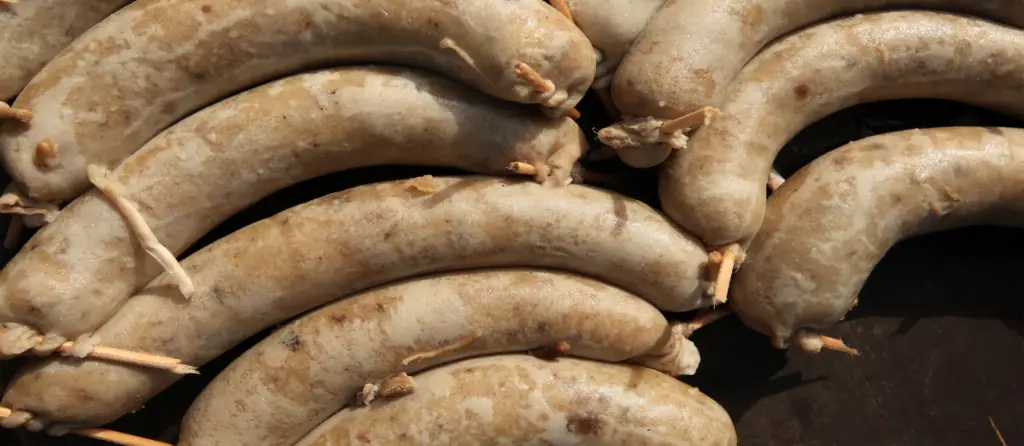
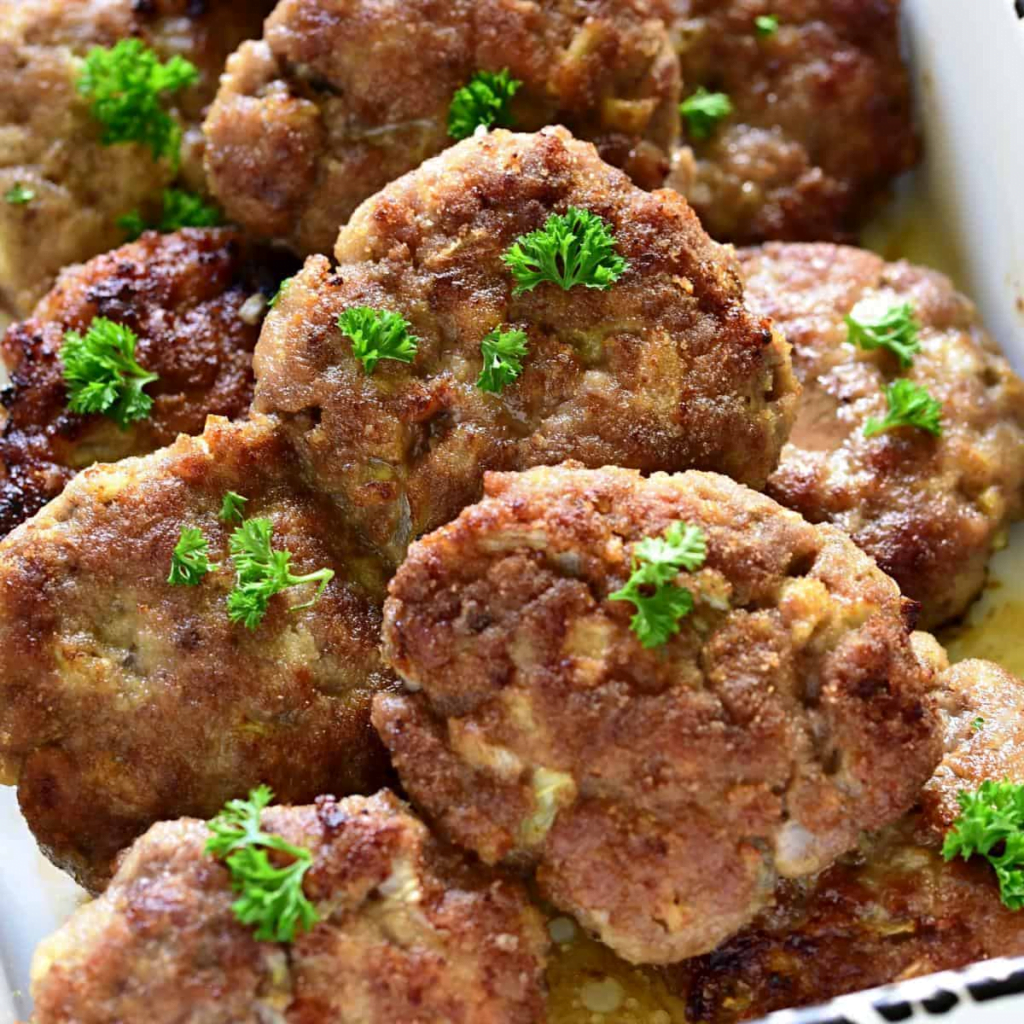
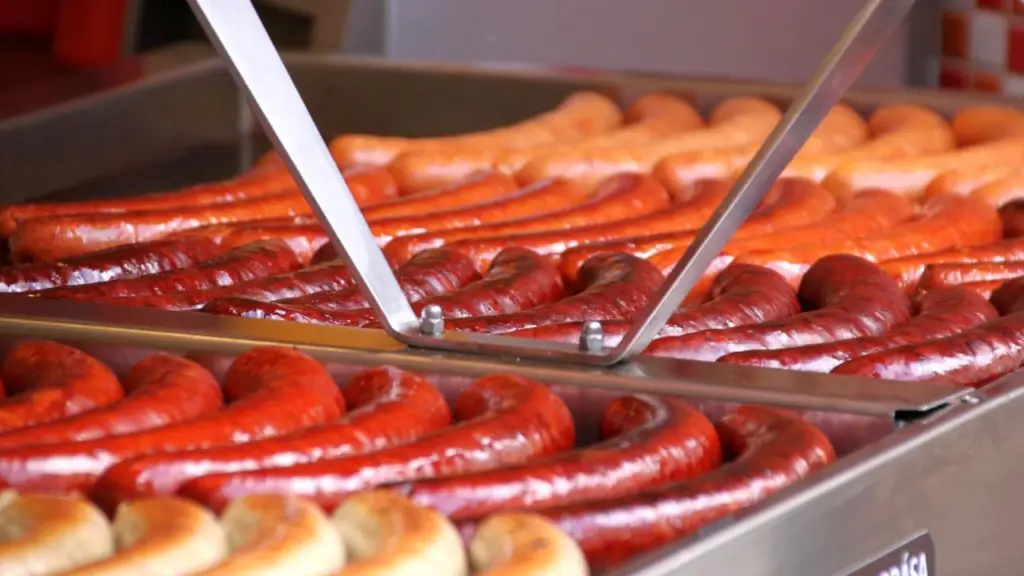
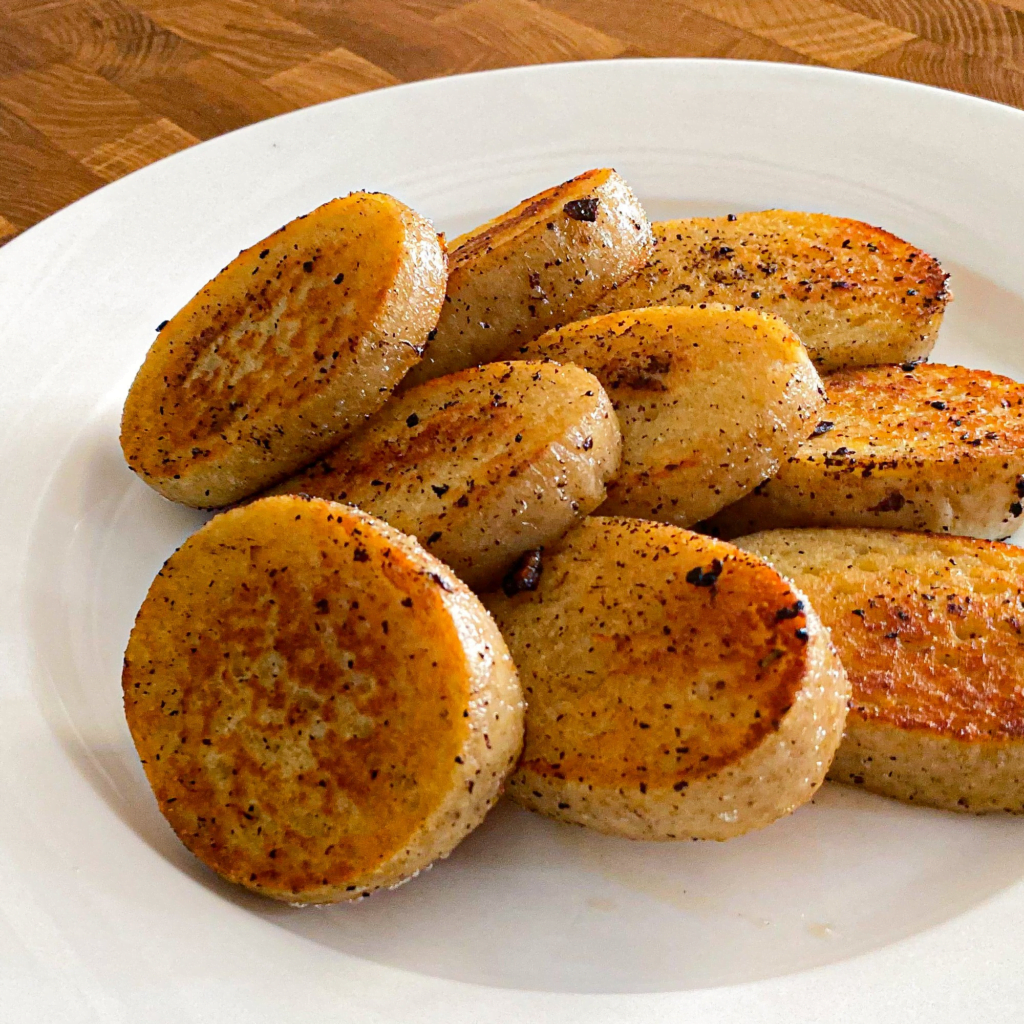
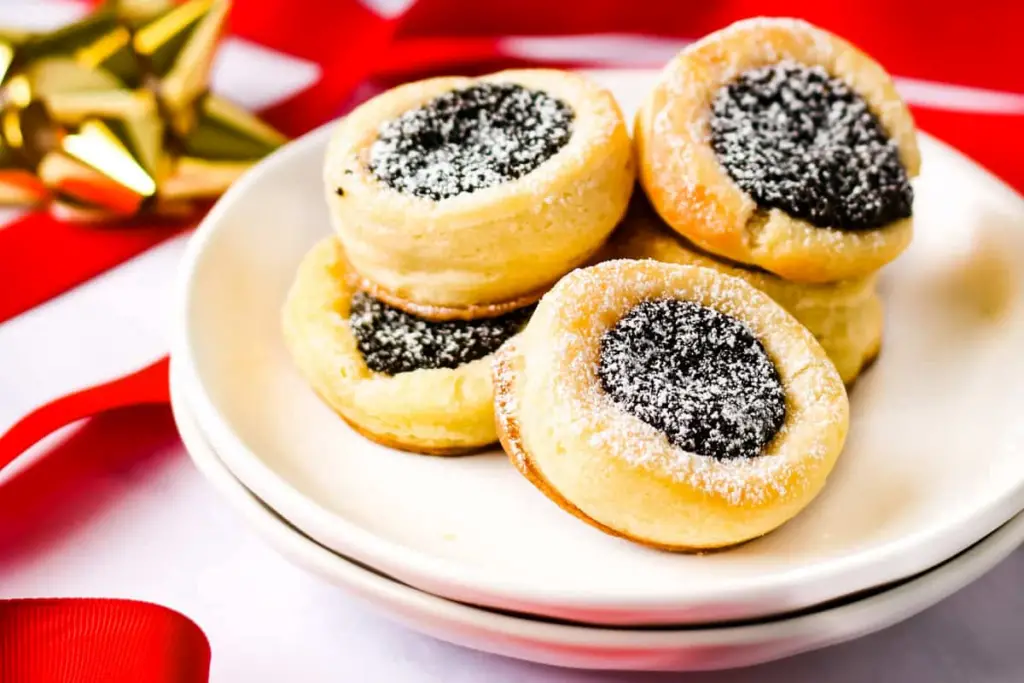
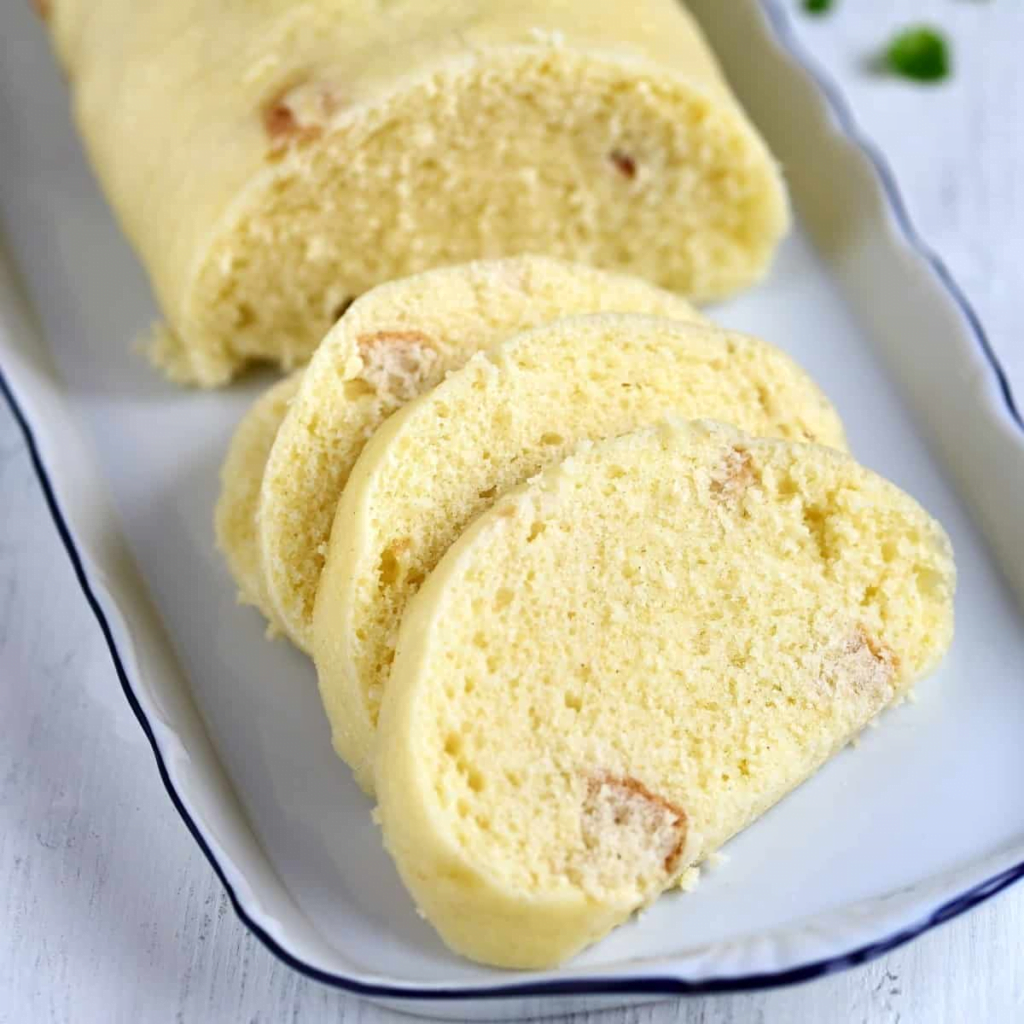
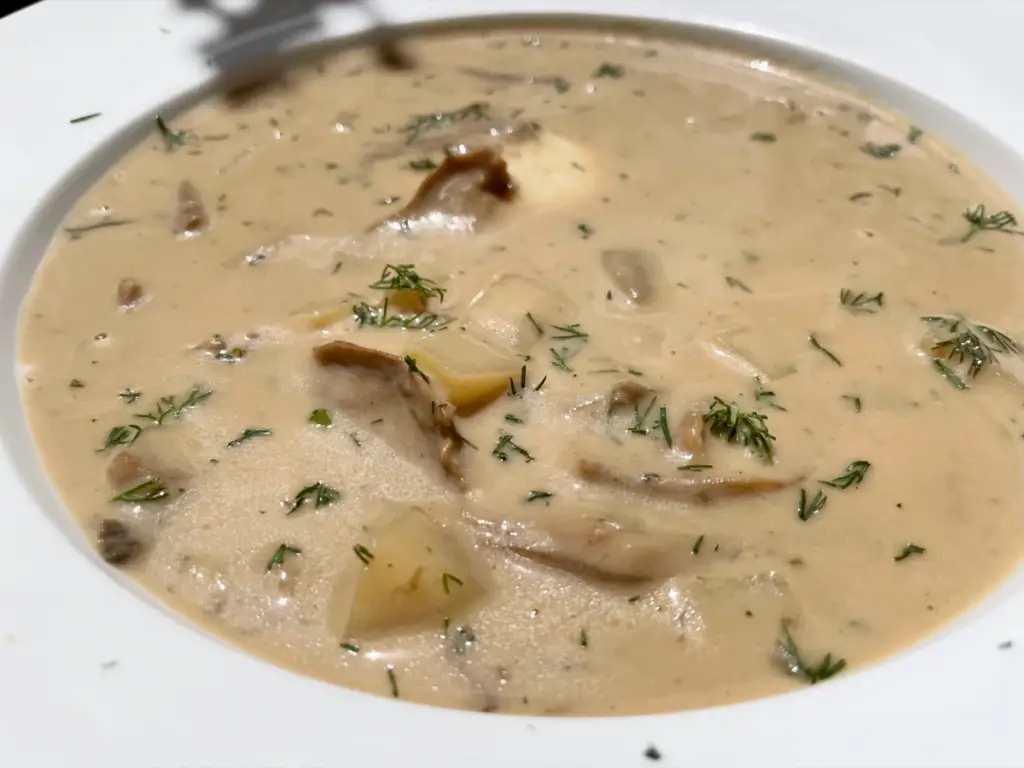



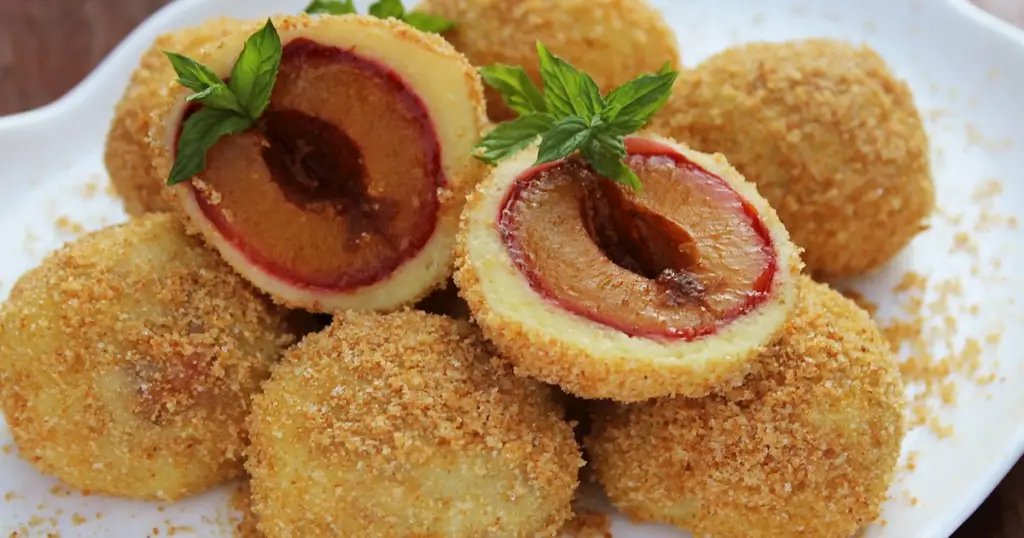



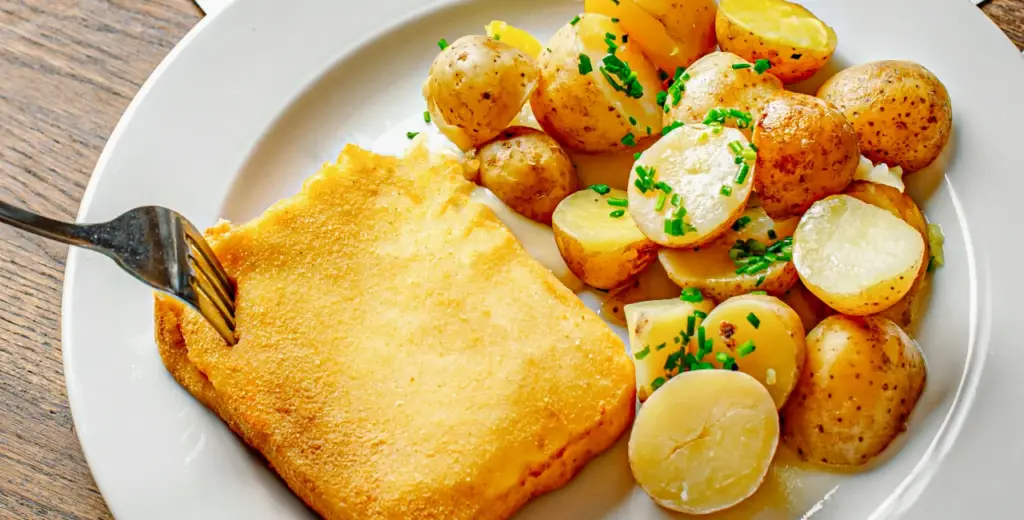

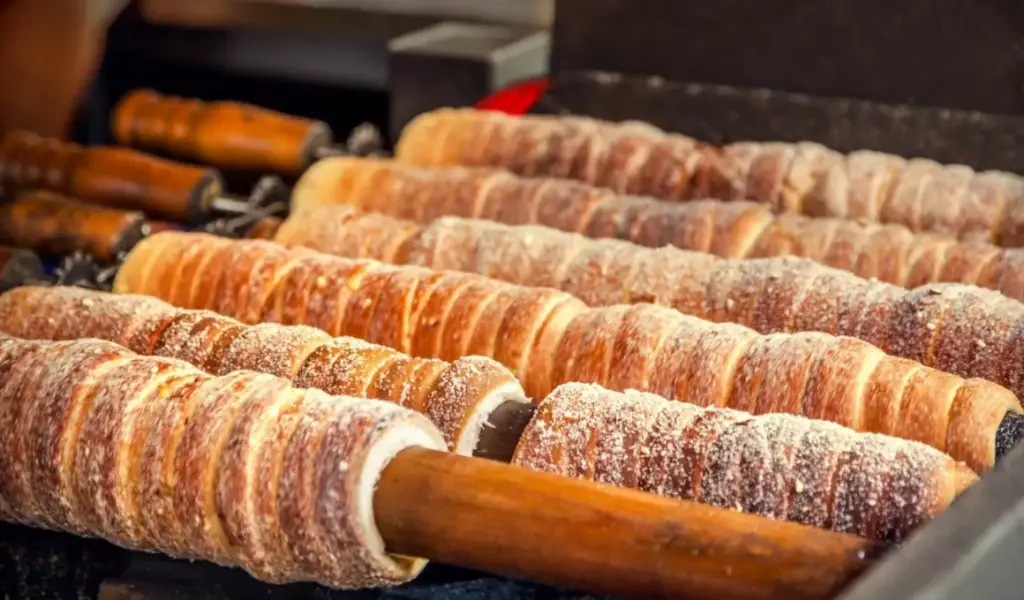

10 Interesting Facts about Czechia (Czech Republic)

The Czech Republic, a land of enchanting castles, charming towns, and a rich history, also boasts a treasure trove of unexpected quirks and fascinating customs. Get ready to be surprised as we delve into 10 strange laws, funny traditions, and downright mind-boggling facts that will leave you saying “Jenom v Česku!” (Only in Czechia!).
Late-Night Revelry? No Problem!

Party animals rejoice! Unlike many countries, pubs in Czechia can legally stay open all night, ensuring your celebrations can truly last until dawn.
Beware the Talking Broom
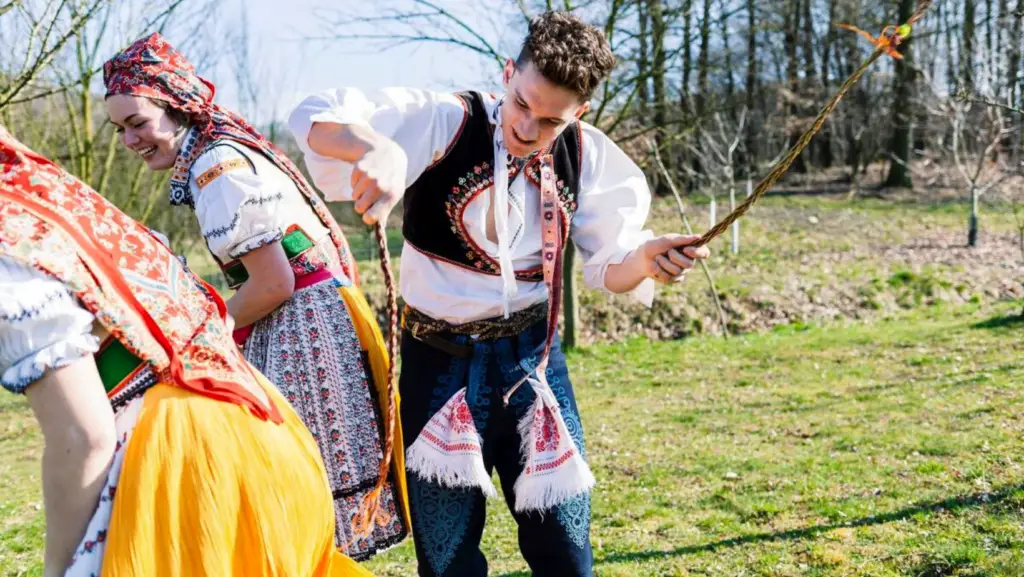
On Easter Monday, a curious tradition unfolds. Young men playfully whip girls with decorated willow branches, said to bring good health and fertility. Don’t worry, it’s all in good fun (and usually accompanied by painted eggs!).
Name Game Gone Wild
Unlike most countries, Czechia allows parents to get creative when naming their children. Want to name your son Natalie or your daughter John? As long as the name can be grammatically adapted to the Czech language, it’s generally fair game!
Superstitions on Steroids
Czechs take their superstitions seriously! Opening an umbrella indoors is said to bring bad luck, while spilling salt predicts misfortune. So, be mindful of your table manners!
A Monument to Middle Fingers

Take a stroll through Kutná Hora and you’ll encounter a truly unique landmark – the SeA Monument to Middle Fingersdlec Ossuary, a chapel decorated with the bones of over 40,000 people. Talk about an unorthodox artistic choice!
Beer Before Wine? Divine!
Forget the age-old rhyme; in Czechia, there’s no shame in starting your meal with a beer! In fact, it’s often considered the perfect accompaniment to hearty Czech dishes.
Soup for Breakfast? Absolutely!
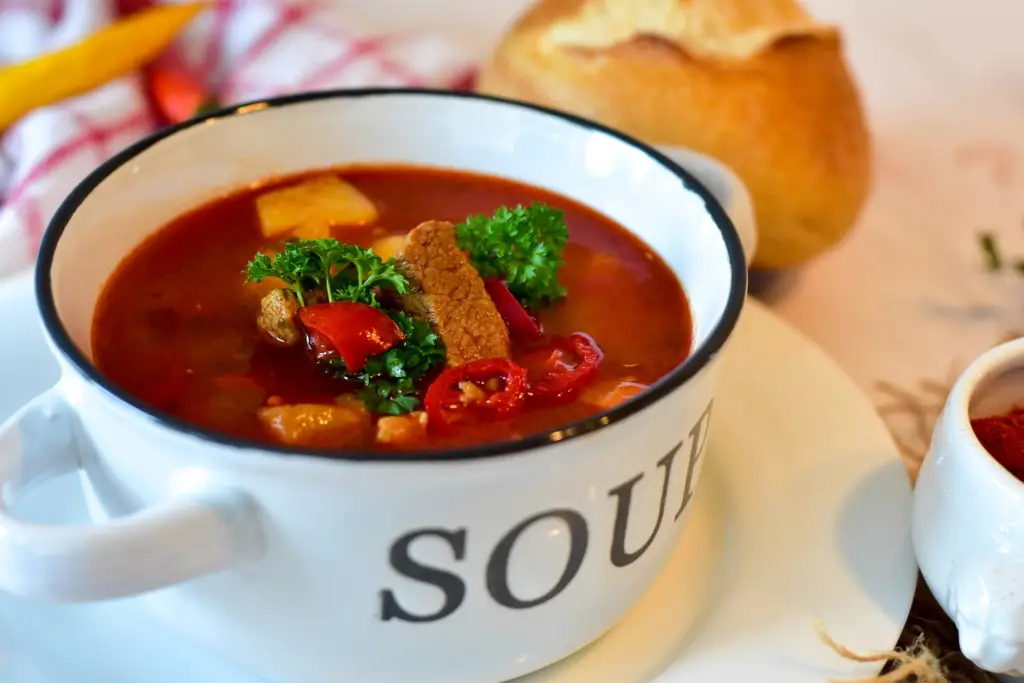
Don’t be surprised to see Czechs slurping down a bowl of hearty soup for breakfast. They come in a variety of flavors, from creamy potato to tangy cabbage, and are a perfectly acceptable way to start your day.
Second Breakfast is a Thing
Czechs take their snacking seriously. They often enjoy a “svačina” (second breakfast) around mid-morning, a light snack to keep them going until lunch.
Bare in the Sauna? No Sweat!

Sauna etiquette takes a different turn in Czechia. Ditch the towels and embrace the “natural” approach – going barefoot in the sauna is perfectly acceptable here.
Celebrating the Name Day, Not the Birthday?
While birthdays are acknowledged, Czechs often place greater emphasis on their “jmeniny” (name day) – a celebration based on the saint they’re named after. Don’t forget to send greetings on their jmeniny!
Czechia’s (Czech Republic) History and the Effect It Has Had on the Cuisine

The Czech Republic boasts a rich history, and its cuisine is a delicious testament to that! Let’s embark on a delectable adventure, exploring how each era has left its mark on the plates of this fascinating country.
From Humble Beginnings (6th Century BC)
The story starts with the Celts, who arrived in the 4th century BC and laid the foundation for Czech cuisine with basic food cultivation and early cooking practices.
Centuries later, Slavic peoples arrived around the 6th century AD, further shaping the culinary landscape.
A Kingdom Takes Shape (9th Century)
The Přemyslid dynasty ushered in a period of growth for the Czech state. While specific details about the food scene are scarce, this era likely saw the development of regional specialties and the rise of ingredients that would become Czech staples.
A Golden Age of Flavor (14th Century)
Under the reign of Charles IV, Bohemia experienced a golden age. The royal court’s influence led to a refinement of culinary techniques, with a focus on spices, herbs, and flavorful sauces.
Freshwater fish, game, and hearty stews became prominent features on the menu.
A Habsburg Embrace (1526-1918)
Bohemia became part of the Holy Roman Empire and later the Habsburg Empire. This period saw an exciting fusion of Austrian and German influences with Czech traditions. Dumplings (knedlíky), a true Czech icon, emerged alongside sauerkraut and hearty meat dishes.
And let’s not forget the perfect pairing – beer, especially the world-famous Pilsner, became a welcome companion to every meal.
French Finesse (19th Century)
The 19th century saw the publication of “Pražská kuchařka,” a Czech cookbook that showcased the influence of French cuisine. Multi-course meals became the norm, with an emphasis on a specific order – soups, fish, meats, and of course, sweet endings.
National Pride Takes Center Stage (1918)
Following World War I, Czechoslovakia gained independence. A surge in national pride led to a renewed interest in traditional Czech dishes. Sweet main courses, a unique feature of Czech cuisine, continued to be a delightful surprise on the menu.
Adapting Through Hardship (1948-1989)
The Communist era brought food shortages and rationing. Necessity became the mother of invention, and traditional dishes were adapted to make the most of available ingredients.
Home cooking and preserving family recipes became a cornerstone of Czech cuisine during this challenging time.
Modern Flavors with a Nod to Tradition (Present Day)

Today, Czech cuisine boasts a greater emphasis on meat, reflecting the current abundance of farmable meat.
However, beloved traditional dishes like svíčková (marinated beef), vepřo-knedlo-zelo (roast pork with dumplings and sauerkraut), and a variety of sweet desserts continue to be enjoyed by Czechs and visitors alike.
References
- A Brief History of the Czech Republic
- Czech cuisine on Wikipedia
- czechwalks.com
- czechcenter.org
- en.wikipedia.org
- nerdyfoodies.com
- prague.org
How Czechia’s (Czech Republic) Climate and Geography has Influenced the Cuisine

The Czech Republic, or Czechia as it’s fondly called, boasts a cuisine as varied as its geography! Nestled in the heart of Central Europe, Czechia is a tapestry of rolling hills, fertile plains, and majestic mountains, each region offering a unique flavor adventure.
Let’s raise a glass of Pilsner (the country’s beloved beer!) and delve into how location, climate, and geography have shaped this delicious culinary landscape.
Where Mountains Meet Meadows
Bordered by the majestic Sudeten and Carpathian mountains, Czechia’s diverse landscape plays a starring role in its cuisine. Fertile plains and dense forests provide a bounty of fresh ingredients, influencing what ends up on your plate.
Think crisp vegetables in summer, hearty stews in winter, and a bounty of wild mushrooms and berries foraged from the Šumava forests in South Bohemia.
Climate Cues the Menu
The temperate climate of Czechia, transitioning between oceanic and continental, dictates the seasons’ culinary offerings.
Cool and dry summers are perfect for growing vegetables and lighter fare, while winters, though mild and wet, call for comforting stews and dumplings – a national staple!
A Regional Feast
Travel across Czechia and your taste buds will embark on a delightful journey. Bohemia, in the west, is famous for its hearty dishes like “svíčková na smetaně” (marinated tenderloin in a creamy sauce) served with delectable dumplings (knedlíky).
Venture east to Moravia and discover “kyselo,” a unique rye sourdough soup flavored with caraway and mushrooms.
South Bohemia, known for its freshwater fish, offers carp as a traditional Christmas treat, while West Bohemia boasts the herbal liqueur “Becherovka” – a perfect after-dinner digestif.
North Bohemia, a haven for game meats, tempts you with Krkonoše trout and the strong-smelling (but delicious!) “tvarůžky” cheese.
Beer: The Soul of Czech Culture
No exploration of Czech cuisine is complete without mentioning beer! This beloved beverage, especially the world-famous Pilsner, is a national treasure.
Beer gardens and pubs are more than just places to quench your thirst; they are social hubs where meals are shared, stories are told, and the spirit of Czech culture comes alive.
References
- Czech cuisine on Wikipedia
- Regions of the Czech Republic
- jidlonacestach.cz
- wanderingwheatleys.com
- worldtravelguide.net
Understanding the Essence of Czech Cuisine

Czech cuisine stands out for its rich flavors, hearty portions, and traditional recipes passed down through generations. Let’s dive into what makes Czech food unique and why it holds a special place in the hearts of locals and visitors alike.
Rooted in Tradition
Czech cuisine is deeply rooted in the country’s history and traditions. Many dishes date back to the Austro-Hungarian Empire, reflecting a blend of various influences.
Despite modern influences, Czechs have preserved their culinary heritage, making traditional recipes a staple in everyday life.
Hearty and Comforting Dishes
Czech meals are known for their heartiness. The cuisine focuses on filling and satisfying dishes perfect for the colder months.
Stews, roasts, and soups are common, with generous portions of meat, potatoes, and dumplings. These dishes provide comfort and warmth, embodying the essence of Czech hospitality.
Unique Ingredients
Czech cuisine features unique ingredients that set it apart. One of the most distinctive elements is the use of caraway seeds, which add a distinctive flavor to many dishes.
Sauerkraut and pickled vegetables also play a significant role, providing a tangy contrast to rich meats. Additionally, mushrooms foraged from the lush Czech forests are a prized addition to many recipes.
Signature Dishes
Several signature dishes define Czech cuisine. Svíčková, a marinated beef dish served with a creamy vegetable sauce and dumplings, is a beloved national favorite.
Vepřo knedlo zelo, a classic combination of roast pork, dumplings, and sauerkraut, showcases the hearty nature of Czech food.
And let’s not forget about smažený sýr, a deep-fried cheese delicacy that’s a popular comfort food.
Desserts and Sweets
Czechs have a sweet tooth, and their desserts reflect this. Traditional pastries like koláče, filled with fruit, cheese, or poppy seeds, are a delight. Trdelník, a sweet, cylindrical pastry coated in sugar and nuts, has become a favorite street food.
These desserts add a sweet ending to any meal, highlighting the diversity of Czech culinary skills.
Beer Culture
No discussion of Czech cuisine is complete without mentioning beer. Czechia boasts the highest beer consumption per capita in the world, and beer is more than just a drink; it’s a cultural staple.
Pilsner Urquell and Budweiser Budvar are iconic Czech beers, and local breweries produce countless varieties enjoyed by both locals and tourists.
Regional Variations
Czech cuisine varies by region, each offering its unique specialties. In South Bohemia, freshwater fish like carp and trout are common, reflecting the area’s lakes and rivers.
Moravia, known for its vineyards, incorporates wine into its culinary traditions. This regional diversity adds depth and variety to Czech cuisine, making it a rich culinary tapestry.
Modern Influences
While traditional dishes remain popular, Czech cuisine has evolved to include modern influences. International cuisines have made their mark, and contemporary chefs blend traditional recipes with new techniques and ingredients.
This fusion keeps Czech cuisine dynamic and relevant in the global culinary scene.
Exploring Czech Ingredients: The Flavors of Croation Cuisine
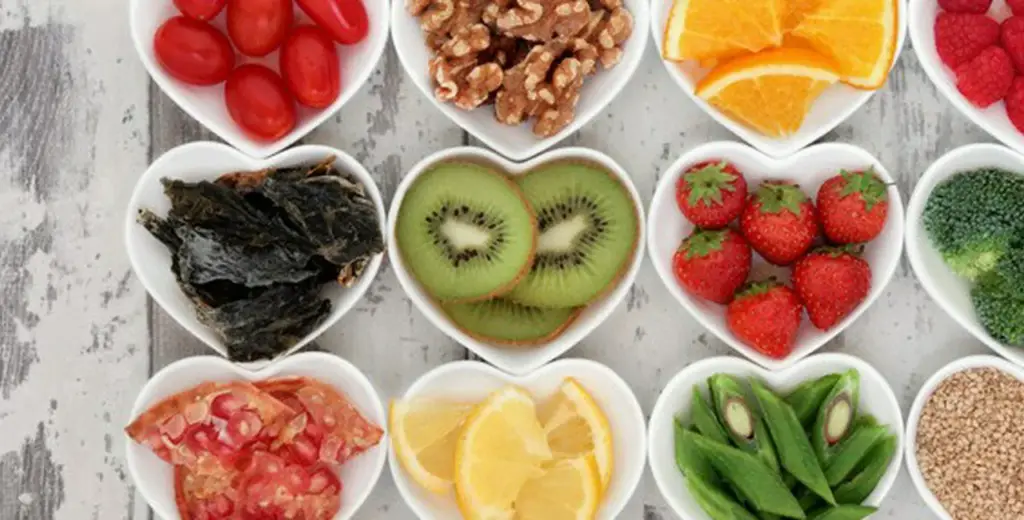
Czech cuisine might not be your typical “sunshine and sandals” fare, but it’s a hearty and delicious journey for your taste buds!
To truly understand this unique culinary landscape, we need to delve into the treasure trove of ingredients that grace Czech tables. Here’s a breakdown of the key players:
Meaty Marvels
Meat lovers, rejoice! Czech cuisine celebrates meat in a variety of comforting dishes. Pork reigns supreme, featuring in roasts, sausages (klobásy), and the iconic vepřo-knedlo-zelo (roast pork with dumplings and sauerkraut).
Beef also takes center stage in stews and the melt-in-your-mouth svíčková na smetaně (marinated tenderloin in a creamy sauce).
Don’t forget about game meats like venison and rabbit, especially popular in regions with abundant forests.
Dumplings: A National Treasure
Knedlíky (dumplings) are a true icon of Czech cuisine. These delectable pockets of dough come in a variety of savory and sweet forms. Bread dumplings (knedlíky houskové) are the classic choice, perfect for soaking up rich sauces. Potato dumplings (knedlíky bramborové) add a lighter touch, while fruit-filled dumplings (ovocné knedlíky) are a delightful, sweet treat.
Vegetables for Vibrancy
While meat might be king, vegetables play a crucial role in Czech cooking. Root vegetables like potatoes, carrots, and beets are a staple, perfect for hearty stews and soups.
Cabbage features prominently in sauerkraut (zelí) – a tangy and versatile side dish.
Fresh vegetables like peas, asparagus (especially in Moravia), and mushrooms add seasonal bursts of flavor.
Sauces that Sing
Czech cuisine isn’t afraid of bold flavors! Rich and creamy cream sauces are a common sight, gracing dishes like svíčková.
Soups often feature a flavorful broth base, some with a tangy twist from sour cream or vinegar. Spices like caraway seeds, paprika, and allspice add a subtle warmth to many dishes.
Sweet Endings
Czechs have a serious sweet tooth! Pastries like kolaches (filled pastries) and fluffy buchty (sweet buns) are a delightful way to end a meal.
Dumplings (yes, even sweet versions!) filled with fruit or plums are a popular dessert choice. And don’t forget the honey – a traditional sweetener used in many Czech pastries.
Beer: The Perfect Pairing
We can’t talk about Czech cuisine without mentioning beer! This beloved beverage, especially the world-famous Pilsner, is a national treasure.
Its refreshing taste perfectly complements the hearty flavors of Czech dishes, making it the ideal mealtime companion.
Czechia’s National Food
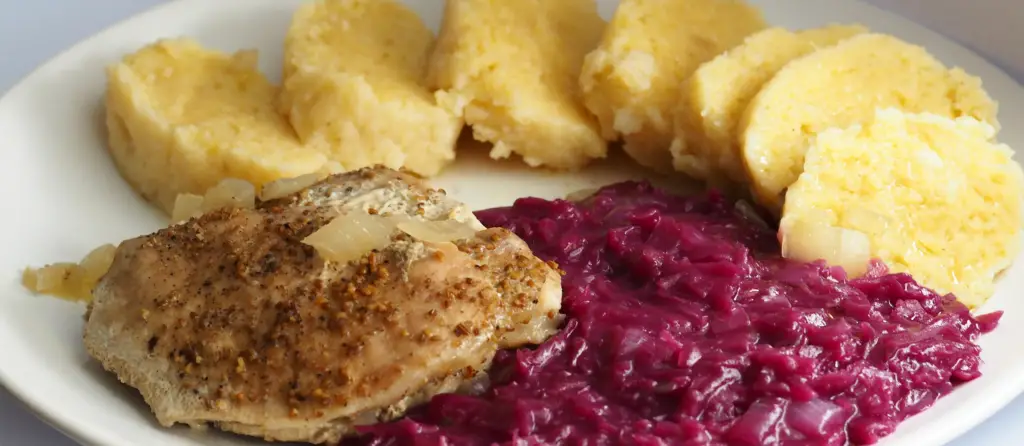
The Czech Republic boasts a rich tapestry of regional specialties, each bursting with unique flavor. But there’s one dish that reigns supreme, a national treasure that embodies the spirit of Czech comfort food: vepřo-knedlo-zelo (pronounced vehp-rzo-kned-lo-zelo).
Let’s raise a glass (of Pilsner, of course!) and delve into the heart of this iconic dish.
A Match Made in Culinary Heaven
Vepřo-knedlo-zelo is a symphony of textures and tastes, a triumvirate of culinary delights. Vepřo, the star of the show, translates to “pork,” and it typically takes the form of a slow-roasted pork shoulder or loin.
Imagine succulent, tender meat falling off the bone, infused with the essence of herbs and spices.
The Dumpling Dynasty
No Czech dish is complete without knedlíky (dumplings), and vepřo-knedlo-zelo is no exception. These fluffy pillows of dough come in various forms, but here, knedlíky houskové (bread dumplings) are the traditional choice.
Made with a simple dough of flour, yeast, and water, they soak up the delicious juices from the roasted pork, adding a delightful textural contrast.
The Tangy Twist: Zelí Takes the Stage
Zelí, the final act in this culinary masterpiece, translates to “cabbage.” But this isn’t your average limp coleslaw. Vepřo-knedlo-zelo features tangy, flavorful sauerkraut.
The fermentation process imbues the cabbage with a delightful sourness, perfectly balancing the richness of the pork and dumplings. Some variations might also include stewed cabbage alongside the sauerkraut, adding another layer of flavor and texture.
Exploring Czech Street Food

Czech street food is a delightful fusion of traditional flavors and modern twists. Walking through the bustling streets of cities like Prague and Brno, you’ll encounter a variety of mouth-watering dishes that capture the essence of Czech cuisine.
Let’s dive into the vibrant street food scene and explore five common recipes that locals and tourists can’t get enough of.
Prague: The Heart of Czech Street Food
Prague, the capital city, is the epicenter of Czech street food culture. The city’s historical charm blends seamlessly with its dynamic food stalls and markets.
Places like Wenceslas Square and Old Town Square are teeming with vendors selling everything from traditional sausages to sweet pastries. The annual food festivals, such as the Prague Food Festival and Street Food Festival, further highlight the city’s diverse culinary offerings.
Brno: A Rising Star
Brno, the second-largest city in Czechia, is quickly gaining a reputation for its vibrant street food scene. Known for its youthful energy and innovative spirit, Brno’s food markets are a hotspot for trendy and delicious street eats.
The city’s flea markets and food truck gatherings, like those at Zelny Trh (Vegetable Market), showcase a variety of local and international flavors.
5 Common Street Food Recipes in Czechia
- Trdelník (Chimney Cake)
- Smažený Sýr (Fried Cheese)
- Klobása (Grilled Sausage)
- Langoš (Fried Dough)
- Párek v Rohlíku (Czech Hot Dog)
Vibrant Street Food Cities
Prague and Brno undoubtedly lead the way in Czech street food, offering a vibrant mix of traditional and modern flavors. However, other cities like Olomouc and Pilsen are also emerging as notable street food destinations.
Olomouc is known for its cheese markets, while Pilsen, the birthplace of Pilsner beer, combines great food with its famous brews.
The Most Popular Czech Recipes

Let’s explore 10 of the Most Popular Czech Recipes that showcase the rich culinary heritage of the Czech Republic. Each recipe is a delightful blend of tradition, flavor, and comfort. 🇨🇿
Obložené Chlebíčky (Open-Faced Sandwiches):
These bite-sized open-faced sandwiches feature knedlíky (simple boiled dumplings) as the base. They are served alongside various toppings, including goulash and pickled herring. Perfect for appetizers or light meals.
Pivní Sýr (Beer Cheese):
A pungent and flavorful beer cheese, traditionally served with mustard and butter in Czech restaurants and bistros. Pair it with crusty bread or crackers for a delightful snack.
Zemiakové Placky (Bramborák):
Similar to latkes, these potato pancakes are seasoned with marjoram. Crispy on the outside and tender on the inside, they make a comforting side dish or a light meal.
Bílá Fazolová Polévka (White Bean Soup):
A frugal and hearty soup, this Czech classic feature white beans simmered with vegetables and herbs. Perfect for chilly days, it’s a staple in Czech households.
Houbový Kuba (Mushroom and Barley Dish)
Earthy and comforting, this dish combines mushrooms and barley. It’s often prepared during the Christmas season, bringing warmth and flavor to the table1.
Kulajda Polévka (Creamy Mushroom Soup):
A thick and creamy soup made with mushrooms, potatoes, and cream. Flavored with dill and topped with poached quail or chicken eggs, it’s a Czech favorite.
Kyselica (Sauerkraut Soup):
This thick and tangy soup features sauerkraut, potatoes, and smoked meat. It’s a comforting dish that warms both body and soul1.
Guláš (Goulash):
Originally from Hungary, goulash has become a beloved comfort food in the Carpathian region. It’s a hearty stew made with tender beef, paprika, and vegetables1.
Karbanátky (Fried Meat Patties):
Seasoned with marjoram and caraway seeds, these fried meat patties are Czech comfort food. Think of them as flavorful meatballs or Czech-style hamburgers.
Smažený Sýr (Fried Cheese):
Prepared by breading slices of cheese and frying them until golden and crispy. Traditionally served with tartar sauce and French fries, it’s a popular street food and snack.
How Healthy is Czech Food?

Czech Republic boasts a delicious cuisine, but like many countries, it faces challenges in balancing hearty tradition with healthy habits. Let’s explore the health aspects of the Czech diet and see how it impacts the nation’s well-being.
A Cause for Concern: Diet-Related Diseases
One major concern is the rise of diet-related non-communicable diseases (NCDs) like obesity and diabetes. Statistics show that Czech Republic’s obesity rates (27.3% of women and 28.9% of men) are higher than the European average.
Diabetes also affects a significant portion of the population (6.9% of women and 9.4% of men). While specific data on heart health isn’t available, a healthy diet is crucial for preventing heart disease.
Room for Improvement: Eating Habits
Studies reveal that Czechs still have a way to go when it comes to healthy eating habits compared to the rest of Europe. Fruit and vegetable consumption is lower than recommended, and breakfast habits raise eyebrows – some Czechs even opt for beer instead!
Czech Superfoods to the Rescue!
Despite these challenges, some traditional Czech foods offer a silver lining. Kefir, a fermented dairy product packed with gut-friendly probiotics, is a nutritional powerhouse. Garlic, a staple in soups, boasts anti-inflammatory properties.
And for a dose of antioxidants, green tea is a popular choice.
Life Expectancy: A Story of Progress and Setbacks
Czech life expectancy has shown positive trends, increasing steadily until the COVID-19 pandemic.
However, this progress took a hit in 2021 with a nearly two-year drop. COVID-19 itself claimed over 12,000 lives in 2020, with a mortality rate higher than the EU average.
Looking to the Future: Childhood Health and Health System Resilience
The good news is that childhood stunting is on track to be eliminated, affecting only 2.7% of children under 5. However, childhood obesity remains a concern at 4.4%, and efforts to prevent further increase are crucial.
Additionally, progress is needed in reducing anaemia among women and lowering the rate of low-birth-weight infants.
The COVID-19 pandemic has highlighted the importance of a resilient and well-prepared healthcare system. Investing in healthcare recovery and strengthening preparedness for future emergencies are crucial steps for the Czech Republic and other countries facing similar challenges.
So, What’s the Takeaway?
Czech cuisine offers a delicious journey, but incorporating more fruits, vegetables, and healthy breakfast habits can enhance the nation’s well-being. By celebrating traditional superfoods and investing in healthcare resilience, Czech Republic can strive for a future where delicious and healthy go hand-in-hand.
References
- Czechia: Country Health Profile 2023
- Czechs and their Eating Habits: A Closer Look
- Immunity-boosting Czech superfoods
- State of Health in the EU Czechia
Czech Cuisine Recipes to Try at Home
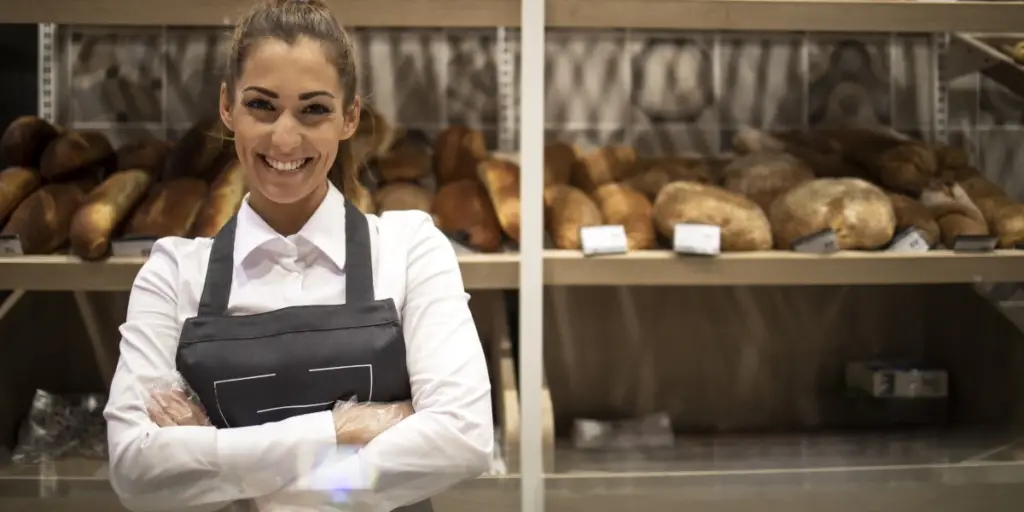
Dreaming of a taste of Prague? Craving the hearty comfort food that warms the soul on a chilly Czech evening? Look no further! This chapter is your passport to a delicious culinary adventure, packed with easy-to-follow recipes that will transform your kitchen into a celebration of Czech cuisine.
Forget complicated techniques and obscure ingredients. Here, we’ll guide you through iconic Czech dishes like the legendary vepřo-knedlo-zelo (savory pork roast with dumplings and sauerkraut) and the melt-in-your-mouth svíčková na smetaně (marinated beef in a creamy sauce). We won’t forget about the sweet tooths – fluffy koláče (pastries) and delightful knedlíky (dumplings) filled with fruit will have you saying “Dobrou chuť!” (Enjoy your meal!) in no time.
So, grab your apron, preheat your oven, and get ready to embark on a delectable journey through the Czech Republic. These recipes are designed for home cooks of all skill levels, ensuring that anyone can experience the magic of Czech cuisine in their own kitchen. Let’s get cooking!
Czech Food – Knedlíky Houskové (Bread Dumplings)

The History and Background of Knedlíky Houskové
Knedlíky Houskové, or bread dumplings, are a staple in Czech cuisine, often served alongside hearty dishes like goulash or roasted meats. These dumplings have been a part of Czech culinary traditions for centuries, originating from the Bohemian region.
They are beloved for their soft texture and ability to soak up delicious sauces, making them a perfect complement to many Czech dishes.
Czech Food – Knedlíky Houskové Ingredients
Ingredients:
- 500 grams of all-purpose flour
- 1 teaspoon of salt
- 250 milliliters of milk
- 2 large eggs
- 1 packet of active dry yeast (7 grams)
- 1 tablespoon of sugar
- 4 slices of day-old white bread, cut into small cubes
- 2 tablespoons of butter (optional)
Czech Food – Knedlíky Houskové Recipe
Serves: 4 people
Estimated Cooking Time: 1.5 hours
Calories per Serving: Approximately 300 calories
Preparing the Ingredients
Activating the Yeast
- Warm the milk to lukewarm (about 110°F or 45°C).
- Stir in the sugar and yeast.
- Let the mixture sit for 10 minutes until it becomes frothy.
Making the Dough
- In a large bowl, combine the flour and salt.
- Add the eggs and the yeast mixture to the flour.
- Mix until a dough forms.
- Knead the dough for about 10 minutes until it becomes smooth and elastic.
- Cover the dough with a clean towel and let it rise in a warm place for about 1 hour, or until it doubles in size.
Preparing the Bread Cubes
- While the dough is rising, cut the day-old bread into small cubes.
- If using butter, melt it in a pan and lightly toast the bread cubes until golden brown. This step is optional but adds extra flavor.
Making the Dumplings
Shaping the Dumplings
- Once the dough has risen, gently punch it down.
- Knead in the bread cubes until they are evenly distributed throughout the dough.
- Divide the dough into 2 equal portions.
- Shape each portion into a loaf about 8 inches long.
Cooking the Dumplings
- Bring a large pot of salted water to a boil.
- Carefully place the dumpling loaves into the boiling water.
- Reduce the heat to a gentle simmer and cover the pot.
- Cook the dumplings for about 20 minutes, turning them halfway through cooking.
Serving the Dumplings
- Remove the dumplings from the water and let them cool slightly.
- Slice the dumplings into 1-inch thick pieces using a serrated knife or a piece of thread for cleaner cuts.
- Serve the sliced dumplings warm with your favorite Czech main dishes like goulash or roasted pork.
Nutritional Information (per serving)
- Calories: 300 kcal
- Carbohydrates: 55g
- Protein: 10g
- Fat: 5g
- Fiber: 2g
- Sugar: 4g
Enjoy making and savoring Knedlíky Houskové, a delicious and comforting dish that brings a taste of Czech tradition to your table. These bread dumplings are sure to be a hit, soaking up all the flavors of your favorite Czech meals!
Czech Food – Knedlíky Bramborové (Potato Dumplings)

Discovering the Delights of Knedlíky: A Taste of Czech Tradition
As a traveling food blogger and a small restaurant owner, I love discovering traditional recipes from different regions. Today, let’s dive into the Czech Republic and explore the wonderful world of Knedlíky!
The History and Background of Knedlíky
Knedlíky, or Czech dumplings, are a staple in Czech cuisine. These delightful dumplings have been a part of Czech culinary tradition for centuries. They are often served as a side dish with meat and gravy or with sweet toppings.
The Czech Republic, known for its beautiful landscapes and rich cultural heritage, boasts a variety of Knedlíky, ranging from bread dumplings to potato dumplings. Each region has its own twist on this classic dish, making it a beloved comfort food throughout the country.
Czech Food – Knedlíky Bramborové
Ingredients for Bread Dumplings (Serves 4)
- Bread Dumplings:
- 2 cups all-purpose flour
- 1 cup stale bread cubes (white bread works best)
- 1/2 teaspoon salt
- 1 large egg
- 1/2 cup milk
- 1/2 teaspoon baking powder
- 1/4 cup water (if needed)
Czech Food – Knedlíky Bramborové Recipe
Step-by-Step Instructions
Preparing the Dough
- Mix Dry Ingredients:
- In a large mixing bowl, combine 2 cups of all-purpose flour, 1/2 teaspoon of salt, and 1/2 teaspoon of baking powder.
- Add Bread Cubes:
- Stir in 1 cup of stale bread cubes, making sure they are evenly distributed.
- Incorporate Wet Ingredients:
- In a separate bowl, beat 1 large egg with 1/2 cup of milk.
- Combine Mixtures:
- Gradually add the egg and milk mixture to the dry ingredients, mixing until a dough forms. If the dough is too dry, add up to 1/4 cup of water, a little at a time.
Forming and Cooking the Dumplings
- Shape the Dumplings:
- Divide the dough into four equal parts and shape each part into a small loaf or log.
- Boil the Dumplings:
- Bring a large pot of salted water to a boil. Carefully place the dumplings into the boiling water.
- Cook the Dumplings:
- Reduce the heat to a gentle boil and cook the dumplings for about 20-25 minutes, turning occasionally to ensure even cooking.
- Check for Doneness:
- The dumplings are done when they float to the surface and are firm to the touch. Remove them from the water with a slotted spoon.
- Slice and Serve:
- Let the dumplings cool slightly before slicing them into 1/2-inch thick rounds. Serve warm with your favorite meat and gravy or a sweet topping like fruit compote.
Estimated Cooking Time
- Preparation Time: 20 minutes
- Cooking Time: 25 minutes
- Total Time: 45 minutes
Nutritional Information (per serving)
- Calories: 220
- Carbohydrates: 44g
- Protein: 7g
- Fat: 2g
- Fiber: 2g
- Sugar: 2g
- Sodium: 290mg
Enjoy making and eating Knedlíky, a true Czech delight that brings a piece of Central European culinary tradition to your table!
Czech Food – Ovocné Knedlíky (Fruit-filled Dumplings)

Exploring the Origins of Ovocné Knedlíky: A Sweet Czech Delight
As a food enthusiast and a restaurant owner, I’m always intrigued by the stories behind traditional dishes. Today, let’s delve into the Czech Republic and uncover the delightful history of Ovocné Knedlíky, also known as Fruit-filled Dumplings.
The History and Background of Ovocné Knedlíky
Ovocné Knedlíky have been cherished in Czech cuisine for generations. Originating from the heart of Central Europe, these dumplings are a testament to the Czech Republic’s culinary creativity.
Traditionally served as a dessert or a sweet treat, Ovocné Knedlíky are beloved for their tender dough and luscious fruit fillings. This delightful dish reflects the Czech people’s love for simple yet flavorful desserts, making it a must-try for anyone exploring Czech gastronomy.
Czech Food – Ovocné Knedlíky Ingredients
Ingredients for Fruit-filled Dumplings (Serves 4)
- Dough:
- 2 cups all-purpose flour
- 1 large egg
- 1/4 cup milk
- Pinch of salt
- Fruit Filling:
- 1 cup fresh fruit (such as strawberries, apricots, or plums), diced
- 2 tablespoons sugar
- 1/2 teaspoon cinnamon (optional)
- Topping:
- 2 tablespoons unsalted butter
- 2 tablespoons breadcrumbs
- Powdered sugar for dusting (optional)
Czech Food – Ovocné Knedlíky Recipe
Step-by-Step Instructions
Preparing the Dough
- Mix Dough Ingredients:
- In a large mixing bowl, combine 2 cups of all-purpose flour, 1 large egg, 1/4 cup of milk, and a pinch of salt.
- Knead the Dough:
- Knead the dough until it becomes smooth and elastic. If the dough is too sticky, add a little more flour.
- Rest the Dough:
- Cover the dough with a clean kitchen towel and let it rest for about 30 minutes to relax the gluten.
Making the Fruit Filling
- Prepare the Fruit:
- Wash and dice 1 cup of fresh fruit of your choice, such as strawberries, apricots, or plums.
- Sweeten the Fruit:
- In a bowl, toss the diced fruit with 2 tablespoons of sugar and 1/2 teaspoon of cinnamon (if using). Let it sit for 10 minutes to macerate.
Assembling the Dumplings
- Divide and Fill the Dough:
- Divide the dough into 8 equal portions. Flatten each portion into a small disc and place a spoonful of the fruit filling in the center.
- Seal the Dumplings:
- Carefully fold the dough over the fruit filling and seal the edges, forming a smooth ball. Ensure there are no gaps where the filling can escape.
Cooking the Dumplings
- Boil the Water:
- Bring a large pot of salted water to a gentle boil.
- Cook the Dumplings:
- Carefully drop the dumplings into the boiling water and cook for about 10-12 minutes, or until they float to the surface.
Serving the Ovocné Knedlíky
- Prepare the Topping:
- In a separate pan, melt 2 tablespoons of unsalted butter. Add 2 tablespoons of breadcrumbs and toast until golden brown.
- Serve Warm:
- Remove the cooked dumplings from the water using a slotted spoon and roll them in the toasted breadcrumb mixture.
- Optional Garnish:
- Dust the Ovocné Knedlíky with powdered sugar before serving, if desired.
Estimated Cooking Time
- Preparation Time: 30 minutes
- Cooking Time: 10-12 minutes
- Total Time: 40-42 minutes
Nutritional Information (per serving)
- Calories: 250
- Carbohydrates: 48g
- Protein: 6g
- Fat: 5g
- Fiber: 3g
- Sugar: 10g
- Sodium: 100mg
Indulge in the sweet simplicity of Ovocné Knedlíky, a delicious Czech dessert that captures the essence of Central European flavors in every bite!
Czech Food – Svíčková Na Smetaně (Marinated Tenderloin in a Creamy Sauce)

Unveiling the Tradition of Svíčková Na Smetaně: A Czech Culinary Gem
Embarking on a culinary journey to the Czech Republic, we uncover the rich tradition of Svíčková Na Smetaně, a dish that epitomizes the essence of Czech cuisine.
The History and Background of Svíčková Na Smetaně
Svíčková Na Smetaně, also known as Marinated Tenderloin in a Creamy Sauce, is a beloved Czech dish with a history as rich as its flavor. Originating from the heart of Bohemia, this dish has been cherished by Czech families for generations.
Traditionally served on Sundays and special occasions, Svíčková Na Smetaně reflects the Czech people’s love for hearty, comforting meals made with simple, wholesome ingredients.
Czech Food – Svíčková Na Smetaně Ingredients
Ingredients for Marinated Tenderloin (Serves 4)
- Tenderloin Marinade:
- 1 lb beef tenderloin
- 1 onion, chopped
- 2 carrots, chopped
- 2 celery stalks, chopped
- 2 bay leaves
- 5 whole black peppercorns
- 2 cups beef broth
- Creamy Sauce:
- 1 cup sour cream
- 1 tablespoon all-purpose flour
- 1 tablespoon unsalted butter
- 1 tablespoon lemon juice
- Salt and pepper to taste
- Accompaniments:
- Cooked dumplings (Knedlíky) or bread dumplings
- Cranberry sauce
- Fresh parsley for garnish
Czech Food – Svíčková Na Smetaně Recipe
Step-by-Step Instructions
Marinating the Tenderloin
- Prepare the Marinade:
- In a large pot, combine chopped onion, carrots, celery, bay leaves, black peppercorns, and beef broth.
- Marinate the Tenderloin:
- Place the beef tenderloin in the marinade, ensuring it’s fully submerged. Cover and refrigerate for at least 6 hours or overnight.
Cooking the Tenderloin
- Sear the Tenderloin:
- Remove the tenderloin from the marinade and pat it dry with paper towels. In a skillet, heat oil over medium-high heat and sear the tenderloin on all sides until browned.
- Braise the Tenderloin:
- Transfer the seared tenderloin back to the marinade in the pot. Cover and simmer over low heat for 1.5 to 2 hours, or until the meat is tender and cooked through.
Preparing the Creamy Sauce
- Strain the Marinade:
- Once the tenderloin is cooked, remove it from the pot and strain the marinade, reserving the liquid and discarding the solids.
- Make the Sauce Base:
- In a separate saucepan, melt butter over medium heat. Stir in flour to make a roux, then gradually add the strained marinade, whisking constantly to avoid lumps.
- Thicken the Sauce:
- Cook the sauce until it thickens, then stir in sour cream and lemon juice. Season with salt and pepper to taste.
Serving Svíčková Na Smetaně
- Slice the Tenderloin:
- Slice the cooked tenderloin into thin slices.
- Plate and Garnish:
- Arrange the sliced tenderloin on a serving platter and pour the creamy sauce over it. Garnish with fresh parsley.
- Serve with Dumplings:
- Serve Svíčková Na Smetaně with cooked dumplings (Knedlíky) or bread dumplings and a side of cranberry sauce.
Estimated Cooking Time
- Preparation Time: 20 minutes (plus marinating time)
- Cooking Time: 2 hours
- Total Time: 2 hours 20 minutes (plus marinating time)
Nutritional Information (per serving)
- Calories: 450
- Carbohydrates: 25g
- Protein: 30g
- Fat: 25g
- Fiber: 3g
- Sugar: 5g
- Sodium: 800mg
Experience the comforting flavors of Czech cuisine with Svíčková Na Smetaně, a dish that celebrates the warmth and hospitality of the Czech Republic!
Czech Food – Koláče (Filled with Fruit, Cheese, or Poppy Seeds, are a Delight)

Exploring the Origins of Koláče: Czech Delights Filled with Flavor
Let’s journey into the heart of Czech cuisine and discover the delightful history behind Koláče. Originating from the Czech Republic, Koláče are beloved pastries that showcase the region’s culinary heritage.
The History and Background of Koláče
Koláče hold a special place in Czech culinary tradition, with roots dating back centuries. These pastries were originally made to celebrate special occasions and holidays, often enjoyed with family and friends.
Today, Koláče are cherished for their versatility, with fillings ranging from fruit to cheese to poppy seeds. Whether enjoyed as a sweet treat or a savory snack, Koláče continue to delight taste buds across the Czech Republic and beyond.
Czech Food – Koláče Ingredients
Ingredients for Koláče Dough (Serves 6)
- Dough:
- 2 1/2 cups all-purpose flour
- 1/4 cup granulated sugar
- 1/2 teaspoon salt
- 1 packet (2 1/4 teaspoons) active dry yeast
- 1/2 cup warm milk
- 1/4 cup unsalted butter, melted
- 2 large eggs
- Filling Options:
- Fruit filling (such as apricot, cherry, or plum jam)
- Cheese filling (such as farmer’s cheese or cream cheese)
- Poppy seed filling (prepared or homemade)
Czech Food – Koláče Recipe
Step-by-Step Instructions
Preparing the Dough
- Activate the Yeast:
- In a small bowl, dissolve the yeast in warm milk and let it sit for 5-10 minutes until foamy.
- Mix Dry Ingredients:
- In a large mixing bowl, combine flour, sugar, and salt.
- Combine Wet Ingredients:
- In another bowl, whisk together melted butter and eggs.
- Form Dough:
- Make a well in the center of the dry ingredients and pour in the yeast mixture and the wet ingredients. Mix until a dough forms.
- Knead the Dough:
- Transfer the dough to a lightly floured surface and knead for about 5-7 minutes until smooth and elastic.
- Let Dough Rise:
- Place the dough in a greased bowl, cover with a clean kitchen towel, and let it rise in a warm place for about 1 hour, or until doubled in size.
Filling and Shaping the Koláče
- Divide the Dough:
- Punch down the risen dough and divide it into 6 equal portions.
- Shape the Koláče:
- Roll out each portion of dough into a circle or oval shape. Place them on a parchment-lined baking sheet.
- Add Fillings:
- Spoon your choice of filling (fruit, cheese, or poppy seed) onto the center of each dough round, leaving a border around the edges.
- Fold and Seal:
- Fold the edges of the dough over the filling, creating a rustic border. Pinch to seal the edges.
Baking the Koláče
- Preheat Oven:
- Preheat the oven to 350°F (175°C).
- Let Rise Again:
- Cover the shaped Koláče with a kitchen towel and let them rise for another 15-20 minutes.
- Bake:
- Bake the Koláče in the preheated oven for 20-25 minutes, or until golden brown.
Serving Koláče
- Cool and Enjoy:
- Allow the Koláče to cool slightly before serving. They can be enjoyed warm or at room temperature.
Estimated Cooking Time
- Preparation Time: 20 minutes (plus rising time)
- Cooking Time: 20-25 minutes
- Total Time: 40-45 minutes (plus rising time)
Nutritional Information (per serving, using fruit filling)
- Calories: 280
- Carbohydrates: 45g
- Protein: 6g
- Fat: 8g
- Fiber: 2g
- Sugar: 15g
- Sodium: 220mg
Indulge in the delightful flavors of Koláče, versatile pastries that offer a taste of Czech tradition in every bite!
Czech Food – Trdelník (A Sweet, Cylindrical Pastry – Chimney Cake)

Exploring the Origins of Trdelník: A Czech Sweet Treat
Let’s delve into the history and origins of Trdelník, a delightful Czech pastry that has captured the hearts of locals and visitors alike for centuries.
The History and Background of Trdelník
Trdelník, also known as Chimney Cake, traces its roots back to the Czech Republic, particularly in regions like Prague and Transylvania. This cylindrical pastry has a rich history dating back to the Middle Ages when it was originally made over an open flame.
Today, Trdelník is a beloved street food in the Czech Republic and has gained popularity worldwide for its irresistible combination of crispy, caramelized exterior and soft, doughy interior. Whether enjoyed plain or filled with sweet toppings like cinnamon sugar or nuts, Trdelník is a true culinary gem of Czech cuisine.
Czech Food – Trdelník Ingredients
Ingredients for Trdelník Dough (Makes 4-6 servings)
- Dough:
- 2 1/2 cups all-purpose flour
- 1/2 teaspoon salt
- 1/2 cup warm milk
- 1/4 cup granulated sugar
- 2 teaspoons active dry yeast
- 1/4 cup unsalted butter, melted
- 1 large egg
- Coating and Toppings:
- 1/2 cup granulated sugar
- 1 teaspoon ground cinnamon (optional)
- Crushed nuts (such as almonds or walnuts) for topping (optional)
Czech Food – Trdelník Recipe
Step-by-Step Instructions
Preparing the Dough
- Activate the Yeast:
- In a small bowl, dissolve the yeast in warm milk and let it sit for 5-10 minutes until foamy.
- Mix Dry Ingredients:
- In a large mixing bowl, combine flour, salt, and sugar.
- Combine Wet Ingredients:
- In another bowl, whisk together melted butter and egg.
- Form Dough:
- Make a well in the center of the dry ingredients and pour in the yeast mixture and the wet ingredients. Mix until a dough forms.
- Knead the Dough:
- Transfer the dough to a lightly floured surface and knead for about 5-7 minutes until smooth and elastic.
- Let Dough Rise:
- Place the dough in a greased bowl, cover with a clean kitchen towel, and let it rise in a warm place for about 1 hour, or until doubled in size.
Shaping and Baking Trdelník
- Prepare Toppings:
- In a shallow bowl, mix together granulated sugar and ground cinnamon (if using).
- Shape the Dough:
- Divide the risen dough into 4-6 equal portions. Roll each portion into a long rope, about 1 inch thick.
- Coat and Wrap:
- Roll each rope in the cinnamon sugar mixture, ensuring it’s evenly coated. Wrap the coated rope around a wooden or metal cylinder, overlapping the layers slightly.
- Bake:
- Place the wrapped cylinders on a baking sheet lined with parchment paper. Bake in a preheated oven at 350°F (175°C) for 20-25 minutes, or until golden brown and crispy.
Serving Trdelník
- Remove and Cool:
- Carefully remove the baked Trdelník from the cylinders and let them cool slightly on a wire rack.
- Optional Toppings:
- Sprinkle the warm Trdelník with crushed nuts or additional cinnamon sugar for extra flavor.
Estimated Cooking Time
- Preparation Time: 20 minutes (plus rising time)
- Cooking Time: 20-25 minutes
- Total Time: 40-45 minutes (plus rising time)
Nutritional Information (per serving)
- Calories: 320
- Carbohydrates: 55g
- Protein: 6g
- Fat: 8g
- Fiber: 2g
- Sugar: 15g
- Sodium: 220mg
Indulge in the sweet delight of Trdelník, a Czech pastry that’s sure to satisfy your cravings for something deliciously unique!
Czech Food – Smažený Sýr (Fried Cheese)

Discovering the Rich Tradition of Smažený Sýr: Czech Fried Cheese
Let’s delve into the flavorful history and origins of Smažený Sýr, a beloved Czech dish that combines the simplicity of cheese with the indulgence of frying.
The History and Background of Smažený Sýr
Smažený Sýr, or Fried Cheese, holds a special place in Czech cuisine as a popular street food and comfort dish. Originating from the Czech Republic, this hearty treat has been enjoyed by locals and visitors alike for generations.
The dish showcases the Czech people’s love for cheese, which has been a staple in their diet for centuries. Often served with tartar sauce and fries, Smažený Sýr embodies the essence of Czech comfort food, offering a satisfying blend of crispy exterior and gooey cheese goodness.
Czech Food – Smažený Sýr Ingredients
Ingredients for Fried Cheese (Serves 2)
- Cheese:
- 2 slices of Edam, Gouda, or Emmental cheese (about 1/2 inch thick)
- Breading:
- 1/2 cup all-purpose flour
- 2 large eggs, beaten
- 1 cup breadcrumbs (preferably panko)
- Oil for Frying:
- Vegetable oil or sunflower oil for frying
- Serving Accompaniments:
- Tartar sauce
- French fries or potato wedges
- Lemon wedges for garnish
Czech Food – Smažený Sýr Recipe
Step-by-Step Instructions
Preparing the Cheese
- Select Cheese:
- Choose slices of Edam, Gouda, or Emmental cheese that are about 1/2 inch thick.
Breading the Cheese
- Prepare Breading Station:
- Set up a breading station with three shallow bowls: one with flour, one with beaten eggs, and one with breadcrumbs.
- Coat the Cheese:
- Dredge each cheese slice in flour, shaking off any excess.
- Dip the floured cheese slices into the beaten eggs, ensuring they are fully coated.
- Press the egg-coated cheese slices into the breadcrumbs, covering them evenly.
Frying the Cheese
- Heat the Oil:
- In a large skillet, heat about 1 inch of vegetable oil or sunflower oil over medium-high heat until hot.
- Fry the Cheese:
- Carefully place the breaded cheese slices in the hot oil, working in batches if necessary to avoid overcrowding the skillet.
- Fry the cheese slices for 2-3 minutes on each side, or until golden brown and crispy.
- Drain and Serve:
- Use a slotted spoon to transfer the fried cheese slices to a paper towel-lined plate to drain excess oil.
Serving Smažený Sýr
- Plate and Garnish:
- Serve the hot fried cheese slices with tartar sauce, French fries or potato wedges, and lemon wedges for garnish.
Estimated Cooking Time
- Preparation Time: 10 minutes
- Cooking Time: 5-6 minutes (per batch)
- Total Time: 15-16 minutes
Nutritional Information (per serving)
- Calories: 550
- Carbohydrates: 45g
- Protein: 20g
- Fat: 30g
- Fiber: 2g
- Sugar: 2g
- Sodium: 800mg
Indulge in the crispy, cheesy goodness of Smažený Sýr, a classic Czech dish that’s sure to satisfy your cravings for comfort food!
Czech Food – Klobása (Grilled Sausage)

Exploring the Origins of Klobása: Grilled Sausage from the Heart of Europe
Let’s journey into the culinary heritage of the Czech Republic and uncover the story behind Klobása, a delicious grilled sausage that’s a staple of Czech cuisine.
The History and Background of Klobása
Klobása, also known as Czech sausage, has been a beloved dish in the Czech Republic for centuries. Originating from Central Europe, Klobása reflects the region’s rich culinary traditions and cultural influences.
Made from a blend of seasoned meats, Klobása is often grilled to perfection, resulting in a smoky and flavorful sausage that’s enjoyed by locals and visitors alike. Whether served as a street food snack or as part of a hearty meal, Klobása embodies the spirit of Czech comfort food.
Czech Food – Klobása Ingredients
Ingredients for Grilled Sausage (Serves 4)
- Sausages:
- 4 Czech-style sausages (Klobása)
- Marinade:
- 1/4 cup olive oil
- 2 cloves garlic, minced
- 1 teaspoon paprika
- 1/2 teaspoon dried oregano
- Salt and pepper to taste
- Serving Accompaniments:
- Mustard
- Sauerkraut
- Grilled onions and bell peppers (optional)
- Bread or rolls for serving
Czech Food – Klobása Recipe
Step-by-Step Instructions
Preparing the Marinade
- Mix Marinade Ingredients:
- In a bowl, combine olive oil, minced garlic, paprika, dried oregano, salt, and pepper. Mix well to incorporate the flavors.
Marinating the Sausages
- Coat the Sausages:
- Place the Czech-style sausages in a shallow dish or resealable plastic bag.
- Pour the marinade over the sausages, ensuring they are evenly coated. Massage the marinade into the sausages for maximum flavor.
- Marinate the Sausages:
- Cover the dish or seal the bag and refrigerate for at least 2 hours, or overnight, to allow the flavors to develop.
Grilling the Sausages
- Preheat the Grill:
- Preheat your grill to medium-high heat, about 375-400°F (190-200°C).
- Grill the Sausages:
- Remove the marinated sausages from the refrigerator and let them come to room temperature for about 15 minutes.
- Place the sausages on the preheated grill and cook for 10-12 minutes, turning occasionally, until they are browned and cooked through.
Serving Klobása
- Plate and Garnish:
- Transfer the grilled sausages to a serving platter.
- Serve hot with mustard, sauerkraut, and grilled onions and bell peppers if desired.
- Accompany with bread or rolls for a complete meal.
Estimated Cooking Time
- Preparation Time: 10 minutes (plus marinating time)
- Grilling Time: 10-12 minutes
- Total Time: 20-22 minutes (plus marinating time)
Nutritional Information (per serving)
- Calories: 300
- Carbohydrates: 2g
- Protein: 15g
- Fat: 25g
- Fiber: 0g
- Sugar: 0g
- Sodium: 900mg
Enjoy the smoky flavors of Klobása, a quintessential Czech dish that’s perfect for grilling season and beyond!
Czech Food – Langoš (Fried Dough)

Exploring the Origins of Langoš: Czech Fried Dough Delight
Let’s embark on a culinary journey to explore the history and origins of Langoš, a delightful Czech street food that’s loved for its crispy exterior and fluffy interior.
The History and Background of Langoš
Langoš has deep roots in Central European cuisine, particularly in countries like the Czech Republic, Hungary, and Slovakia. Originating from Hungarian cuisine, Langoš made its way to the Czech Republic, where it became a popular street food enjoyed by locals and tourists alike.
Traditionally, Langoš was made with simple ingredients like flour, water, yeast, and salt, and fried until golden brown. Today, this beloved snack is often topped with a variety of savory or sweet toppings, making it a versatile and delicious treat.
Czech Food – Langoš (Fried Dough) Ingredients
Ingredients for Fried Dough (Serves 4)
- Dough:
- 2 cups all-purpose flour
- 1 teaspoon instant yeast
- 1/2 teaspoon salt
- 1 tablespoon granulated sugar
- 3/4 cup warm water
- Frying:
- Vegetable oil for frying
- Toppings (Optional):
- Garlic butter
- Grated cheese
- Sour cream
- Chopped herbs (parsley, chives, or dill)
- Ketchup
- Nutella or jam for sweet variation
Czech Food – Langoš (Fried Dough) Recipe
Step-by-Step Instructions
Preparing the Dough
- Activate the Yeast:
- In a small bowl, mix the instant yeast with warm water and sugar. Let it sit for 5-10 minutes until foamy.
- Combine Dry Ingredients:
- In a large mixing bowl, whisk together the all-purpose flour and salt.
- Make Dough:
- Create a well in the center of the flour mixture and pour in the activated yeast mixture.
- Knead Dough:
- Mix until a dough forms. Knead the dough on a lightly floured surface for about 5-7 minutes until it becomes smooth and elastic.
- Let Dough Rise:
- Place the dough in a greased bowl, cover with a clean kitchen towel, and let it rise in a warm place for about 1 hour or until doubled in size.
Frying the Dough
- Heat Oil:
- In a deep skillet or frying pan, heat vegetable oil to 350°F (175°C).
- Divide Dough:
- Punch down the risen dough and divide it into 4 equal portions.
- Roll Out Dough:
- On a lightly floured surface, roll out each portion of dough into a circle or oval shape, about 1/4 inch thick.
- Fry Langoš:
- Carefully place one dough circle into the hot oil. Fry for 2-3 minutes on each side until golden brown and puffed up.
- Drain and Repeat:
- Remove the fried Langoš from the oil and place it on a paper towel-lined plate to drain excess oil. Repeat with the remaining dough portions.
Topping and Serving Langoš
- Add Toppings:
- While still warm, top the fried Langoš with your choice of toppings, such as garlic butter, grated cheese, sour cream, chopped herbs, ketchup, or sweet toppings like Nutella or jam.
- Serve Warm:
- Serve the Langoš immediately while still warm and crispy.
Estimated Cooking Time
- Preparation Time: 15 minutes (plus rising time)
- Cooking Time: 8-10 minutes
- Total Time: 25-30 minutes (plus rising time)
Nutritional Information (per serving, without toppings)
- Calories: 200
- Carbohydrates: 40g
- Protein: 5g
- Fat: 1g
- Fiber: 2g
- Sugar: 1g
- Sodium: 300mg
Enjoy the crispy goodness of Langoš, a delightful Czech snack that’s perfect for any occasion!
Czech Food – Párek v Rohlíku (Czech Hot Dog)

Exploring the History of Párek v Rohlíku: Czech Hot Dog Delight
The Czech Republic’s street food scene is incomplete without Párek v Rohlíku, a beloved Czech Hot Dog. These savory delights have a history as rich as their flavor, originating from the bustling streets of Prague and beyond. Párek v Rohlíku represents the fusion of Czech culinary tradition with global influences, offering a delicious snack enjoyed by locals and visitors alike.
Whether enjoyed as a quick bite on the go or as a satisfying meal, Párek v Rohlíku embodies the spirit of Czech street food culture.
Czech Food – Párek v Rohlíku Ingredients
Ingredients for Czech Hot Dog (Serves 4)
- Sausages:
- 4 Czech-style sausages (Párek)
- Bread Rolls:
- 4 soft bread rolls (Rohlík)
- Toppings:
- Mustard
- Ketchup
- Pickles (sliced)
- Fried onions (optional)
- Sauerkraut (optional)
Czech Food – Párek v Rohlíku Recipe
Step-by-Step Instructions
Preparing the Ingredients
Cooking the Sausages
- Boil Water:
- Bring a pot of water to a boil.
- Cook Sausages:
- Add the Czech-style sausages to the boiling water and simmer for 5-7 minutes until fully cooked.
Preparing the Bread Rolls
- Warm Bread Rolls:
- If desired, warm the soft bread rolls in the oven or microwave until heated through.
Assembling Párek v Rohlíku
- Slice Bread Rolls:
- Slice each bread roll horizontally, leaving one side intact.
- Add Condiments:
- Spread mustard and ketchup on the inside of each bread roll.
- Insert Sausages:
- Place a cooked Czech-style sausage into each bread roll.
- Top with Toppings:
- Add sliced pickles and fried onions on top of the sausages.
- Serve Warm:
- Serve the Párek v Rohlíku immediately while still warm.
Estimated Cooking Time
- Preparation Time: 5 minutes
- Cooking Time: 5-7 minutes
- Total Time: 10-12 minutes
Nutritional Information (per serving)
- Calories: 250
- Carbohydrates: 30g
- Protein: 10g
- Fat: 10g
- Fiber: 2g
- Sugar: 5g
- Sodium: 800mg
Enjoy the delightful flavors of Párek v Rohlíku, a classic Czech street food that’s perfect for any occasion!
Czech Food – Obložené Chlebíčky (Open-Faced Sandwiches)

Unveiling the Tradition of Obložené Chlebíčky: Czech Open-Faced Sandwiches
Obložené Chlebíčky, or Czech Open-Faced Sandwiches, are a quintessential part of Czech culinary culture. Originating from the heart of Central Europe, these sandwiches are a feast for the eyes and the palate. Laden with a colorful array of toppings, Obložené Chlebíčky showcase the Czech people’s penchant for combining fresh ingredients with creative flair.
Whether enjoyed as a quick snack or as part of a leisurely meal, these sandwiches offer a delightful taste of Czech gastronomy.
Czech Food – Obložené Chlebíčky Ingredients
Ingredients for Open-Faced Sandwiches (Serves 4)
- Bread Base:
- 8 slices of rye bread or dark bread
- Topping Options:
- Cooked ham or salami slices
- Hard-boiled eggs, sliced
- Cheese slices (such as Edam or Gouda)
- Cucumber, thinly sliced
- Tomato, thinly sliced
- Radish, thinly sliced
- Lettuce leaves
- Mayonnaise or butter
- Fresh herbs (such as parsley or chives) for garnish
Czech Food – Obložené Chlebíčky Recipe
Step-by-Step Instructions
Preparing the Ingredients
Prepping the Bread Base
- Select Bread:
- Choose rye bread or dark bread slices as the base for your sandwiches.
- Toast (Optional):
- If desired, lightly toast the bread slices for added texture.
Assembling the Toppings
- Prepare Toppings:
- Slice the cooked ham or salami, hard-boiled eggs, cheese, cucumber, tomato, and radish into thin slices.
- Wash Lettuce:
- Wash and dry the lettuce leaves.
Assembling Obložené Chlebíčky
Building the Sandwiches
- Spread Base:
- Spread mayonnaise or butter evenly on each slice of bread.
- Layer Ingredients:
- Arrange the sliced ham or salami, hard-boiled egg, cheese, cucumber, tomato, and radish on top of the bread slices.
- Add Lettuce:
- Place lettuce leaves on top of the assembled toppings.
- Garnish:
- Garnish the sandwiches with fresh herbs for added flavor and visual appeal.
- Slice (Optional):
- If preferred, slice the sandwiches diagonally for a decorative touch.
Serving Obložené Chlebíčky
- Serve Fresh:
- Serve the Obložené Chlebíčky immediately for the best flavor and texture.
Estimated Preparation Time
- Preparation Time: 15 minutes
- Total Time: 15 minutes
Nutritional Information (per serving)
- Calories: 250
- Carbohydrates: 30g
- Protein: 10g
- Fat: 10g
- Fiber: 5g
- Sugar: 3g
- Sodium: 500mg
Indulge in the colorful and flavorful experience of Obložené Chlebíčky, a classic Czech dish that’s perfect for any occasion!
Czech Food – Pivní Sýr (Beer Cheese)

Discovering the Rich Tradition of Pivní Sýr: Czech Beer Cheese
Pivní Sýr, or Beer Cheese, is a delightful culinary creation hailing from the Czech Republic, a region known for its rich beer culture and flavorful cheeses. Originating from the beer halls and taverns of Prague and beyond, Pivní Sýr is a savory spread that perfectly complements the robust flavors of Czech beer.
This delicious cheese spread has become a staple in Czech cuisine, enjoyed by locals and visitors alike as a tasty accompaniment to bread, crackers, and pretzels. Let’s dive into the history and recipe of this delectable Czech delicacy.
Czech Food – Pivní Sýr Ingredients
Ingredients for Beer Cheese Spread (Serves 6)
- Cheese:
- 8 oz (225g) cream cheese, softened
- 1 cup (100g) grated sharp cheddar cheese
- Beer:
- 1/4 cup (60ml) Czech lager beer
- Seasonings:
- 1 clove garlic, minced
- 1 teaspoon Dijon mustard
- 1/4 teaspoon paprika
- Salt and pepper to taste
- Garnish (Optional):
- Chopped fresh chives or parsley
Czech Food – Pivní Sýr Recipe
Step-by-Step Instructions
Preparing the Ingredients
Softening the Cheese
- Soften Cream Cheese:
- Allow the cream cheese to come to room temperature to soften, or microwave it for 15-20 seconds until soft.
Grating the Cheese
- Grate Cheddar Cheese:
- Grate the sharp cheddar cheese using a box grater or a food processor.
Making the Beer Cheese Spread
Mixing the Ingredients
- Combine Cheeses:
- In a mixing bowl, combine the softened cream cheese and grated cheddar cheese.
- Add Beer:
- Gradually pour in the Czech lager beer while stirring continuously to incorporate.
- Seasonings:
- Stir in minced garlic, Dijon mustard, paprika, salt, and pepper, ensuring the ingredients are well combined.
Chilling and Serving
Chilling the Spread
- Refrigerate:
- Transfer the beer cheese spread to a serving dish or airtight container.
- Cover and refrigerate for at least 1 hour to allow the flavors to meld together.
Garnishing and Serving
- Garnish (Optional):
- Before serving, garnish the beer cheese spread with chopped fresh chives or parsley for a pop of color and freshness.
- Serve:
- Serve the Pivní Sýr with bread slices, crackers, pretzels, or vegetable sticks for dipping.
Estimated Preparation Time
- Preparation Time: 10 minutes
- Chilling Time: 1 hour
- Total Time: 1 hour 10 minutes
Nutritional Information (per serving – about 2 tablespoons)
- Calories: 150
- Carbohydrates: 2g
- Protein: 6g
- Fat: 13g
- Fiber: 0g
- Sugar: 1g
- Sodium: 250mg
Indulge in the creamy and flavorful experience of Pivní Sýr, a classic Czech beer cheese spread that’s perfect for any gathering or snack time!
Czech Food – Zemiakové Placky (Bramborák)

Exploring the Heritage of Zemiakové Placky: Czech Potato Pancakes (Bramborák)
Zemiakové Placky, commonly known as Bramborák, are savory potato pancakes that have been cherished in Czech cuisine for generations. Originating from the Czech Republic, these crispy delights are a testament to the region’s love affair with potatoes, a staple ingredient in Czech cooking.
Whether enjoyed as a side dish, snack, or even a main course, Zemiakové Placky are a versatile and comforting treat that reflect the rich culinary heritage of Central Europe. Let’s dive into the history and recipe of this beloved Czech dish.
Czech Food – Zemiakové Placky Ingredients
Ingredients for Potato Pancakes (Serves 4)
- Potatoes:
- 4 large potatoes, peeled and grated
- Onion:
- 1 small onion, grated
- Egg:
- 1 large egg, beaten
- Flour:
- 3 tablespoons all-purpose flour
- Seasonings:
- 1 teaspoon salt
- 1/2 teaspoon black pepper
- 1/2 teaspoon paprika
- Oil:
- Vegetable oil for frying
- Garnish (Optional):
- Sour cream
- Applesauce
- Chopped fresh parsley
Czech Food – Zemiakové Placky Recipe
Step-by-Step Instructions
Preparing the Ingredients
Grating the Potatoes and Onion
- Peel and Grate Potatoes:
- Peel the potatoes and grate them using a box grater or food processor.
- Grate Onion:
- Grate the small onion using the same grater or food processor.
Making the Potato Pancake Batter
Mixing the Ingredients
- Combine Potatoes and Onion:
- In a large mixing bowl, combine the grated potatoes and onion.
- Add Seasonings:
- Add salt, black pepper, and paprika to the potato and onion mixture. Mix well.
- Incorporate Egg and Flour:
- Stir in the beaten egg and all-purpose flour until the ingredients are evenly distributed and form a batter-like consistency.
Frying the Potato Pancakes
Cooking the Pancakes
- Heat Oil:
- In a large skillet or frying pan, heat vegetable oil over medium-high heat until hot.
- Form Pancakes:
- Take a spoonful of the potato mixture and carefully place it in the hot oil, flattening it slightly with the back of the spoon to form a pancake shape.
- Fry Until Golden:
- Fry the potato pancakes for 3-4 minutes on each side, or until they are golden brown and crispy.
- Drain and Repeat:
- Use a slotted spatula to transfer the fried potato pancakes to a paper towel-lined plate to drain excess oil. Repeat the process with the remaining potato mixture.
Serving Zemiakové Placky
- Garnish and Serve:
- Serve the hot Zemiakové Placky with a dollop of sour cream, a side of applesauce, and a sprinkle of chopped fresh parsley, if desired.
Estimated Cooking Time
- Preparation Time: 15 minutes
- Cooking Time: 15-20 minutes
- Total Time: 30-35 minutes
Nutritional Information (per serving – 2 pancakes)
- Calories: 200
- Carbohydrates: 30g
- Protein: 5g
- Fat: 7g
- Fiber: 3g
- Sugar: 2g
- Sodium: 400mg
Enjoy the crispy and flavorful experience of Zemiakové Placky, a classic Czech potato pancake dish that’s perfect for any meal!
Czech Food – Bílá Fazolová Polévka (White Bean Soup)

Exploring the Origins of Bílá Fazolová Polévka: Czech White Bean Soup
Bílá Fazolová Polévka, or Czech White Bean Soup, is a hearty and comforting dish with roots deep in Czech culinary tradition. Originating from the lush countryside and bustling cities of the Czech Republic, this soup reflects the resourcefulness of Czech cuisine, utilizing simple ingredients to create a flavorful and satisfying meal.
Whether enjoyed on a chilly evening or as a wholesome starter, Bílá Fazolová Polévka is a beloved staple in Czech households and eateries. Let’s delve into the history and recipe of this timeless Czech dish.
Czech Food – Bílá Fazolová Polévka Ingredients
Ingredients for White Bean Soup (Serves 4)
- White Beans:
- 1 cup dried white beans
- Vegetables:
- 1 onion, chopped
- 2 carrots, diced
- 2 celery stalks, diced
- 2 cloves garlic, minced
- Broth:
- 4 cups vegetable or chicken broth
- Seasonings:
- 1 teaspoon dried thyme
- 1 bay leaf
- Salt and pepper to taste
- Garnish (Optional):
- Chopped fresh parsley
- Croutons
- Grated Parmesan cheese
Czech Food – Bílá Fazolová Polévka Recipe
Step-by-Step Instructions
Preparing the Ingredients
Soaking the White Beans
- Soak Beans Overnight:
- Place the dried white beans in a large bowl and cover them with water. Allow them to soak overnight or for at least 8 hours.
Chopping the Vegetables
- Prepare Vegetables:
- Chop the onion, dice the carrots and celery, and mince the garlic cloves.
Cooking the White Bean Soup
Simmering the Soup
- Cook Beans:
- Drain and rinse the soaked white beans. In a large pot, combine the beans, chopped onion, diced carrots, diced celery, minced garlic, vegetable or chicken broth, dried thyme, and bay leaf.
- Simmer Soup:
- Bring the mixture to a boil over medium-high heat, then reduce the heat to low. Cover and simmer for 1 to 1 1/2 hours, or until the beans are tender.
Seasoning and Serving
- Season Soup:
- Once the beans are tender, season the soup with salt and pepper to taste. Adjust the seasoning as needed.
- Remove Bay Leaf:
- Remove the bay leaf from the soup before serving.
Serving Bílá Fazolová Polévka
Garnishing and Enjoying
- Garnish and Serve:
- Ladle the hot soup into bowls. Garnish with chopped fresh parsley, croutons, and grated Parmesan cheese, if desired.
Estimated Cooking Time
- Preparation Time: 10 minutes (plus soaking time)
- Cooking Time: 1 to 1 1/2 hours
- Total Time: 1 hour 10 minutes to 1 hour 40 minutes
Nutritional Information (per serving)
- Calories: 200
- Carbohydrates: 35g
- Protein: 10g
- Fat: 1g
- Fiber: 10g
- Sugar: 5g
- Sodium: 800mg
Enjoy the warmth and nourishment of Bílá Fazolová Polévka, a classic Czech white bean soup that’s perfect for any occasion!
Czech Food – Houbový Kuba (Mushroom and Barley Dish)

Unveiling the Tradition of Houbový Kuba: Czech Mushroom and Barley Dish
Houbový Kuba, a delightful combination of mushrooms and barley, holds a special place in Czech cuisine, originating from the rustic kitchens of the Czech Republic. This hearty dish reflects the abundance of mushrooms found in the forests of the region, paired with the nourishing grain, barley.
Houbový Kuba is not only a testament to Czech culinary heritage but also a celebration of the natural bounty of the countryside. Let’s delve into the history and flavors of this comforting Czech dish.
Czech Food – Houbový Kuba Ingredients
Ingredients for Mushroom and Barley Dish (Serves 4)
- Barley:
- 1 cup pearl barley
- Mushrooms:
- 8 oz (225g) mushrooms, sliced (such as button or cremini)
- Onion:
- 1 large onion, finely chopped
- Garlic:
- 2 cloves garlic, minced
- Broth:
- 4 cups vegetable or mushroom broth
- Seasonings:
- 1 teaspoon dried thyme
- Salt and pepper to taste
- Butter:
- 2 tablespoons unsalted butter
- Garnish (Optional):
- Chopped fresh parsley
- Sour cream
Czech Food – Houbový Kuba Recipe
Step-by-Step Instructions
Preparing the Ingredients
Cooking the Pearl Barley
- Rinse Barley:
- Rinse the pearl barley under cold water in a fine-mesh sieve.
- Boil Barley:
- In a large pot, bring 4 cups of water to a boil. Add the rinsed barley and cook for 25-30 minutes, or until tender. Drain any excess water.
Sautéing the Mushrooms and Onions
- Sauté Mushrooms and Onions:
- In a large skillet, melt the butter over medium heat. Add the chopped onion and minced garlic, and sauté until softened, about 5 minutes.
- Add the sliced mushrooms to the skillet and cook until they release their juices and become tender, about 7-8 minutes.
Combining the Ingredients
Bringing It All Together
- Combine Barley and Mushroom Mixture:
- Add the cooked pearl barley to the skillet with the sautéed mushrooms and onions.
- Seasoning and Simmering:
- Pour in the vegetable or mushroom broth, and season with dried thyme, salt, and pepper. Stir well to combine.
- Simmer Houbový Kuba:
- Bring the mixture to a simmer, then reduce the heat to low. Cover and simmer for an additional 10-15 minutes, allowing the flavors to meld together.
Serving Houbový Kuba
Garnishing and Enjoying
- Garnish and Serve:
- Once the dish is cooked and seasoned to your liking, garnish with chopped fresh parsley and serve hot.
- Optionally, serve with a dollop of sour cream on top for added richness.
Estimated Cooking Time
- Preparation Time: 10 minutes
- Cooking Time: 45-50 minutes
- Total Time: 55-60 minutes
Nutritional Information (per serving)
- Calories: 250
- Carbohydrates: 45g
- Protein: 8g
- Fat: 5g
- Fiber: 8g
- Sugar: 3g
- Sodium: 800mg
Enjoy the earthy flavors and comforting warmth of Houbový Kuba, a classic Czech mushroom and barley dish that’s perfect for cozy evenings at home!
Czech Food – Kulajda Polévka (Creamy Mushroom Soup)

Unraveling the Legacy of Kulajda Polévka: Creamy Mushroom Soup from the Czech Republic
Kulajda Polévka, a velvety mushroom soup, is a beloved dish originating from the Czech Republic, a region renowned for its rich culinary heritage. This creamy delicacy has been enjoyed for generations, cherished for its comforting warmth and hearty flavors.
Traditionally made with forest mushrooms, potatoes, and a touch of cream, Kulajda Polévka is a true embodiment of Czech comfort food. Let’s explore the history and flavors behind this classic Czech soup.
Czech Food – Kulajda Polévka Ingredients
Ingredients for Creamy Mushroom Soup (Serves 4)
- Mushrooms:
- 10 oz (280g) mixed mushrooms (such as porcini, chanterelle, and button mushrooms), sliced
- Potatoes:
- 2 large potatoes, peeled and diced
- Onion:
- 1 large onion, finely chopped
- Broth:
- 4 cups vegetable or mushroom broth
- Vinegar:
- 2 tablespoons white wine vinegar
- Dill:
- 2 tablespoons fresh dill, chopped
- Cream:
- 1/2 cup heavy cream
- Egg:
- 1 large egg yolk
- Butter:
- 2 tablespoons unsalted butter
- Flour:
- 2 tablespoons all-purpose flour
- Salt and Pepper:
- To taste
- Garnish (Optional):
- Fresh dill sprigs
- Croutons
Czech Food – Kulajda Polévka Recipe
Step-by-Step Instructions
Preparing the Ingredients
Sautéing Mushrooms and Onions
- Sauté Mushrooms and Onions:
- In a large pot, melt the butter over medium heat. Add the chopped onion and sauté until translucent.
- Add the sliced mushrooms to the pot and cook until they release their juices and become tender, about 8-10 minutes.
Cooking Potatoes and Broth
- Add Potatoes and Broth:
- Add the diced potatoes to the pot with the sautéed mushrooms and onions.
- Pour in the vegetable or mushroom broth and bring the mixture to a simmer.
Creating the Creamy Base
Making the Cream Mixture
- Prepare Cream Mixture:
- In a small bowl, whisk together the heavy cream, egg yolk, and all-purpose flour until smooth.
- Temper Cream Mixture:
- Gradually add a ladleful of hot broth from the pot to the cream mixture, whisking constantly to prevent curdling.
Incorporating Cream into the Soup
- Add Cream Mixture:
- Slowly pour the tempered cream mixture into the pot while stirring continuously to incorporate it into the soup.
- Season and Simmer:
- Season the soup with salt, pepper, and white wine vinegar to taste. Stir in chopped fresh dill.
Simmering and Serving
Simmering the Soup
- Simmer Kulajda Polévka:
- Allow the soup to simmer gently for an additional 10-15 minutes to allow the flavors to meld together.
- Adjust Seasoning:
- Taste and adjust the seasoning if necessary, adding more salt, pepper, or vinegar as desired.
Serving Kulajda Polévka
Garnishing and Enjoying
- Garnish and Serve:
- Ladle the hot Kulajda Polévka into bowls. Garnish with fresh dill sprigs and serve with croutons on the side, if desired.
Estimated Cooking Time
- Preparation Time: 15 minutes
- Cooking Time: 30-35 minutes
- Total Time: 45-50 minutes
Nutritional Information (per serving)
- Calories: 250
- Carbohydrates: 20g
- Protein: 5g
- Fat: 15g
- Fiber: 3g
- Sugar: 3g
- Sodium: 700mg
Savor the creamy goodness of Kulajda Polévka, a classic Czech mushroom soup that’s perfect for warming up on chilly days!
Czech Food – Kyselica (Sauerkraut Soup)

Exploring the Culinary Heritage of Kyselica: Czech Sauerkraut Soup
Kyselica, a tangy and hearty sauerkraut soup, is a traditional dish originating from the Czech Republic. This flavorful soup is a testament to the resourcefulness of Czech cuisine, utilizing simple and readily available ingredients to create a satisfying meal.
With its roots deeply embedded in Czech culinary tradition, Kyselica has been enjoyed for centuries as a comforting and nourishing dish, particularly during the colder months. Let’s delve into the history and flavors of this beloved Czech sauerkraut soup.
Czech Food – Kyselica Ingredients
Ingredients for Sauerkraut Soup (Serves 6)
- Sauerkraut:
- 2 cups sauerkraut, drained and rinsed
- Potatoes:
- 2 large potatoes, peeled and diced
- Onion:
- 1 large onion, finely chopped
- Garlic:
- 2 cloves garlic, minced
- Smoked Meat:
- 8 oz (225g) smoked sausage or ham, sliced
- Broth:
- 6 cups vegetable or chicken broth
- Tomatoes:
- 1 can (14 oz) diced tomatoes
- Paprika:
- 1 tablespoon sweet paprika
- Caraway Seeds:
- 1 teaspoon caraway seeds
- Bay Leaves:
- 2 bay leaves
- Sour Cream:
- 1/2 cup sour cream
- Butter:
- 2 tablespoons unsalted butter
- Salt and Pepper:
- To taste
- Garnish (Optional):
- Chopped fresh parsley
- Crusty bread
Czech Food – Kyselica Recipe
Step-by-Step Instructions
Preparing the Ingredients
Cooking the Potatoes and Onions
- Sauté Onions and Garlic:
- In a large pot, melt the butter over medium heat. Add the chopped onion and minced garlic, and sauté until softened.
- Add Potatoes and Broth:
- Add the diced potatoes to the pot with the sautéed onions and garlic. Pour in the vegetable or chicken broth and bring to a simmer.
Adding Sauerkraut and Smoked Meat
- Incorporate Sauerkraut and Smoked Meat:
- Stir in the drained and rinsed sauerkraut and sliced smoked sausage or ham into the pot.
- Seasoning the Soup:
- Add the diced tomatoes, sweet paprika, caraway seeds, and bay leaves to the pot. Season with salt and pepper to taste.
Simmering and Serving
Simmering the Soup
- Simmer Kyselica:
- Allow the soup to simmer gently over medium-low heat for 30-40 minutes, or until the potatoes are tender and the flavors have melded together.
Finishing Touches and Serving
- Stir in Sour Cream:
- Just before serving, stir in the sour cream until well incorporated, adding a creamy richness to the soup.
- Garnish and Serve:
- Ladle the hot Kyselica into bowls. Garnish with chopped fresh parsley and serve with crusty bread on the side, if desired.
Estimated Cooking Time
- Preparation Time: 15 minutes
- Cooking Time: 40-45 minutes
- Total Time: 55-60 minutes
Nutritional Information (per serving)
- Calories: 300
- Carbohydrates: 25g
- Protein: 15g
- Fat: 15g
- Fiber: 6g
- Sugar: 5g
- Sodium: 1000mg
Indulge in the robust flavors of Kyselica, a classic Czech sauerkraut soup that’s perfect for warming up during chilly evenings!
Czech Food – Guláš (Goulash)

Discovering the Rich Heritage of Guláš: Czech Goulash
Guláš, commonly known as Goulash, is a quintessential dish deeply rooted in Czech culinary tradition. Originating from the heart of Central Europe, in regions like Bohemia, Moravia, and Prague, Goulash has been cherished for centuries as a hearty and flavorful meal.
Its history traces back to Hungarian origins, but over time, Czech cooks have adapted and personalized the recipe, making it a beloved staple in Czech households. Let’s dive into the rich history and regional significance of this iconic Czech dish.
Czech Food – Guláš Ingredients
Ingredients for Goulash (Serves 6)
- Beef:
- 2 lbs (900g) beef chuck, cubed
- Onion:
- 2 large onions, finely chopped
- Bell Peppers:
- 2 bell peppers, diced (any color)
- Tomatoes:
- 2 large tomatoes, diced
- Garlic:
- 4 cloves garlic, minced
- Paprika:
- 2 tablespoons sweet paprika
- Caraway Seeds:
- 1 teaspoon caraway seeds
- Flour:
- 2 tablespoons all-purpose flour
- Beef Broth:
- 4 cups beef broth
- Potatoes:
- 2 large potatoes, peeled and diced
- Bay Leaves:
- 2 bay leaves
- Salt and Pepper:
- To taste
- Vegetable Oil:
- 2 tablespoons vegetable oil
- Garnish (Optional):
- Chopped fresh parsley
- Sour cream
Czech Food – Guláš Recipe
Step-by-Step Instructions
Preparing the Ingredients
Marinating the Beef
- Marinate Beef:
- In a large bowl, combine the cubed beef with 1 tablespoon of sweet paprika, minced garlic, salt, and pepper. Let it marinate for at least 30 minutes.
Chopping Vegetables
- Chop Onions, Peppers, and Tomatoes:
- Finely chop the onions, dice the bell peppers, and dice the tomatoes.
Cooking the Goulash
Sautéing the Beef
- Brown Beef:
- Heat vegetable oil in a large pot over medium-high heat. Add the marinated beef cubes and brown them on all sides.
Adding Onions and Peppers
- Sauté Onions and Peppers:
- Add the finely chopped onions and diced bell peppers to the pot. Sauté until the onions are translucent.
Incorporating Tomatoes and Spices
- Add Tomatoes and Spices:
- Stir in the diced tomatoes, caraway seeds, and remaining tablespoon of sweet paprika. Cook for a few minutes until the tomatoes soften.
Thickening the Sauce
- Thicken with Flour:
- Sprinkle the flour over the ingredients in the pot and stir well to combine. This will help thicken the sauce.
Simmering with Broth and Potatoes
- Pour in Beef Broth:
- Pour the beef broth into the pot and add the diced potatoes and bay leaves. Stir to combine.
- Simmer Goulash:
- Bring the mixture to a simmer, then reduce the heat to low. Cover and simmer for 1 to 1 1/2 hours, or until the beef is tender and the flavors have melded together.
Serving Guláš
Garnishing and Enjoying
- Garnish and Serve:
- Once the goulash is cooked to perfection, remove the bay leaves. Garnish with chopped fresh parsley and serve hot, optionally with a dollop of sour cream on top.
Estimated Cooking Time
- Preparation Time: 15 minutes (plus marinating time)
- Cooking Time: 1 to 1 1/2 hours
- Total Time: 1 hour 15 minutes to 1 hour 45 minutes
Nutritional Information (per serving)
- Calories: 400
- Carbohydrates: 20g
- Protein: 30g
- Fat: 20g
- Fiber: 4g
- Sugar: 6g
- Sodium: 900mg
Indulge in the rich flavors of Guláš, a classic Czech goulash that’s sure to warm your soul and satisfy your taste buds!
Czech Food – Karbanátky (Fried Meat Patties)

Exploring the Origins of Karbanátky: Czech Fried Meat Patties
Karbanátky, the Czech version of fried meat patties, is a cherished dish deeply rooted in the culinary traditions of the Czech Republic. Originating from Czech home kitchens, karbanátky have been a staple comfort food for generations.
These simple yet flavorful meat patties reflect the resourcefulness of Czech cooking, utilizing basic ingredients to create a delicious and satisfying meal. Let’s delve into the history and cultural significance of karbanátky in Czech cuisine.
Czech Food – Karbanátky Ingredients
Ingredients for Fried Meat Patties (Serves 4)
- Ground Meat:
- 1 lb (450g) ground beef or pork
- Bread:
- 2 slices of bread, soaked in water and squeezed dry
- Onion:
- 1 small onion, finely chopped
- Egg:
- 1 large egg
- Garlic:
- 2 cloves garlic, minced
- Flour:
- 2 tablespoons all-purpose flour
- Parsley:
- 2 tablespoons fresh parsley, finely chopped
- Salt and Pepper:
- To taste
- Vegetable Oil:
- For frying
Czech Food – Karbanátky Recipe
Step-by-Step Instructions
Preparing the Ingredients
Soaking Bread and Chopping Onion
- Soak Bread and Chop Onion:
- Place the bread slices in a bowl of water and let them soak for a few minutes. Squeeze out the excess water and crumble the bread into a mixing bowl. Finely chop the onion.
Mixing the Ingredients
- Combine Ingredients:
- In the mixing bowl with the crumbled bread, add the ground meat, chopped onion, minced garlic, egg, flour, chopped parsley, salt, and pepper. Mix until well combined.
Forming and Frying the Patties
Shaping the Meat Patties
- Shape Patties:
- Divide the meat mixture into equal portions and shape them into round patties, about 1/2 inch thick.
Frying the Karbanátky
- Heat Oil:
- In a large skillet, heat vegetable oil over medium-high heat until hot but not smoking.
- Fry Patties:
- Carefully place the meat patties in the hot oil and fry for 3-4 minutes on each side, or until golden brown and cooked through.
Serving Karbanátky
Draining and Enjoying
- Drain and Serve:
- Once the karbanátky are cooked to perfection, remove them from the skillet and drain on paper towels to remove excess oil.
- Serve the fried meat patties hot, alongside mashed potatoes, steamed vegetables, or your favorite side dishes.
Estimated Cooking Time
- Preparation Time: 15 minutes
- Cooking Time: 10-12 minutes
- Total Time: 25-27 minutes
Nutritional Information (per serving)
- Calories: 300
- Carbohydrates: 10g
- Protein: 25g
- Fat: 18g
- Fiber: 1g
- Sugar: 1g
- Sodium: 600mg
Indulge in the delicious simplicity of karbanátky, Czech fried meat patties that are sure to become a favorite in your kitchen!
Czech Food – Jitrnice (A type of blood sausage)

Exploring the Roots of Jitrnice: Czech Blood Sausage
Jitrnice, a type of blood sausage, holds a significant place in Czech culinary tradition, deeply intertwined with the country’s cultural heritage. Originating from rural areas of the Czech Republic, jitrnice has been enjoyed for centuries as a hearty and flavorful delicacy.
This traditional dish reflects the resourcefulness of Czech cuisine, using simple ingredients to create a dish that’s both savory and satisfying. Let’s uncover the history and cultural significance of jitrnice in Czech gastronomy.
Czech Food – Jitrnice Ingredients
Ingredients for Blood Sausage (Serves 4)
- Pork:
- 1 lb (450g) pork shoulder, finely minced
- Pork Liver:
- 8 oz (225g) pork liver, finely minced
- Onion:
- 1 large onion, finely chopped
- Bread:
- 2 slices of bread, soaked in milk and squeezed dry
- Blood:
- 1/2 cup fresh pig’s blood (substitute with beef blood if unavailable)
- Garlic:
- 2 cloves garlic, minced
- Parsley:
- 2 tablespoons fresh parsley, finely chopped
- Marjoram:
- 1 teaspoon dried marjoram
- Allspice:
- 1/2 teaspoon ground allspice
- Salt and Pepper:
- To taste
- Pig Casings:
- 1 package of pig casings, soaked in water according to package instructions
Czech Food – Jitrnice Recipe
Step-by-Step Instructions
Preparing the Ingredients
Soaking Bread and Chopping Onion
- Prepare Bread and Onion:
- Soak the bread slices in milk until softened, then squeeze out the excess milk. Finely chop the onion.
Mixing the Ingredients
- Combine Ingredients:
- In a large mixing bowl, combine the minced pork, pork liver, soaked bread, chopped onion, minced garlic, fresh parsley, dried marjoram, ground allspice, salt, and pepper. Mix well to combine.
Stuffing and Cooking the Sausage
Stuffing the Casings
- Prepare Casings:
- Rinse the pig casings under cold water and soak them in water according to package instructions to soften.
- Stuff Casings:
- Attach one end of the casing to a sausage stuffer. Carefully fill the casings with the meat mixture, ensuring they are evenly filled but not overstuffed. Twist the sausages into links of desired length.
Cooking the Jitrnice
- Boil or Grill:
- To cook, you can either boil the sausages in water for about 20-30 minutes or grill them over medium heat for 15-20 minutes, turning occasionally, until they are cooked through and golden brown.
Serving Jitrnice
Slicing and Enjoying
- Slice and Serve:
- Once cooked, remove the jitrnice from the water or grill. Allow them to cool slightly, then slice them into rounds. Serve hot with mustard, sauerkraut, and crusty bread for a traditional Czech experience.
Estimated Cooking Time
- Preparation Time: 30 minutes
- Cooking Time: 20-30 minutes (boiling) or 15-20 minutes (grilling)
- Total Time: 50-60 minutes (boiling) or 45-50 minutes (grilling)
Nutritional Information (per serving)
- Calories: 300
- Carbohydrates: 10g
- Protein: 25g
- Fat: 18g
- Fiber: 1g
- Sugar: 1g
- Sodium: 700mg
Delve into the rich flavors of jitrnice, a traditional Czech blood sausage that embodies the essence of Czech cuisine and heritage!
Czech Food – Sekaná (Meatloaf)

Unveiling the Heritage of Sekaná: Czech Meatloaf
Sekaná, a traditional Czech meatloaf, is a beloved dish with deep roots in Czech cuisine. Originating from the heart of Central Europe, sekaná has been a staple in Czech households for generations, cherished for its comforting flavors and simplicity.
This hearty dish reflects the resourcefulness of Czech cooking, utilizing basic ingredients to create a wholesome and satisfying meal. Let’s explore the history and cultural significance of sekaná in Czech gastronomy.
Czech Food – Sekaná Ingredients
Ingredients for Meatloaf (Serves 6)
- Ground Meat:
- 1 lb (450g) ground beef
- Ground Pork:
- 1/2 lb (225g) ground pork
- Onion:
- 1 large onion, finely chopped
- Garlic:
- 2 cloves garlic, minced
- Bread Crumbs:
- 1 cup bread crumbs
- Egg:
- 1 large egg
- Milk:
- 1/2 cup milk
- Ketchup:
- 1/4 cup ketchup
- Mustard:
- 1 tablespoon mustard
- Worcestershire Sauce:
- 1 tablespoon Worcestershire sauce
- Salt and Pepper:
- To taste
- Vegetable Oil:
- For greasing
Czech Food – Sekaná Recipe
Step-by-Step Instructions
Preparing the Ingredients
Mixing the Meat Mixture
- Combine Ingredients:
- In a large mixing bowl, combine the ground beef, ground pork, finely chopped onion, minced garlic, bread crumbs, egg, milk, ketchup, mustard, Worcestershire sauce, salt, and pepper. Mix until well combined.
Forming and Baking the Meatloaf
Shaping the Meatloaf
- Shape Meat Mixture:
- Preheat the oven to 350°F (175°C). Grease a loaf pan with vegetable oil. Transfer the meat mixture into the prepared loaf pan and press it evenly into the pan.
Baking Sekaná
- Bake Meatloaf:
- Place the loaf pan in the preheated oven and bake for 50-60 minutes, or until the meatloaf is cooked through and the top is golden brown.
Serving Sekaná
Slicing and Enjoying
- Rest and Slice:
- Once baked, remove the meatloaf from the oven and let it rest for 5-10 minutes. Carefully remove it from the loaf pan and slice it into thick slices.
- Serve Hot:
- Serve the sekaná slices hot, accompanied by mashed potatoes, steamed vegetables, or your favorite side dishes.
Estimated Cooking Time
- Preparation Time: 15 minutes
- Baking Time: 50-60 minutes
- Total Time: 65-75 minutes
Nutritional Information (per serving)
- Calories: 350
- Carbohydrates: 15g
- Protein: 25g
- Fat: 20g
- Fiber: 1g
- Sugar: 3g
- Sodium: 600mg
Indulge in the comforting flavors of sekaná, a classic Czech meatloaf that’s perfect for a hearty family meal!
Czech Food – Čočka na kyselo

Exploring the Origins of Čočka na Kyselo
Čočka na kyselo embodies the heart and soul of Czech cuisine. Originating from the picturesque landscapes of Bohemia and Moravia, this hearty meal has been a staple in Czech households for centuries, offering warmth and comfort during cold winter days.
Let’s delve into the history and regional significance of Čočka na kyselo.
Ingredients for Čočka na Kyselo
Ingredients (Serves 4)
- Lentils:
- 1 cup dried brown lentils
- Potatoes:
- 2 medium potatoes, peeled and diced
- Carrots:
- 2 carrots, peeled and diced
- Onion:
- 1 large onion, finely chopped
- Garlic:
- 2 cloves garlic, minced
- Bay Leaves:
- 2 bay leaves
- Vinegar:
- 2 tablespoons vinegar
- Sugar:
- 1 teaspoon sugar
- Salt and Pepper:
- To taste
- Sour Cream:
- For serving
- Fresh Parsley:
- For garnish
Recipe for Čočka na Kyselo
Step-by-Step Instructions
Preparing the Ingredients
Soaking Lentils and Chopping Vegetables
- Soak Lentils:
- Rinse the dried lentils under cold water and soak them in water for at least 1 hour, then drain.
- Chop Vegetables:
- Peel and dice the potatoes and carrots. Finely chop the onion and mince the garlic.
Cooking the Soup
Boiling Lentils and Vegetables
- Boil Lentils and Vegetables:
- In a large pot, combine the soaked lentils, diced potatoes, diced carrots, chopped onion, minced garlic, bay leaves, vinegar, sugar, salt, and pepper. Add enough water to cover the ingredients by about 2 inches.
- Simmer Soup:
- Bring the pot to a boil over medium-high heat, then reduce the heat to low and let the soup simmer for 30-40 minutes, or until the lentils and vegetables are tender.
Adjusting Seasoning and Serving
- Adjust Seasoning:
- Taste the soup and adjust the seasoning with salt, pepper, vinegar, or sugar according to your preference.
- Serve Hot:
- Ladle the hot soup into bowls. Top each serving with a dollop of sour cream and garnish with fresh parsley.
Estimated Cooking Time
- Preparation Time: 10 minutes (plus 1 hour for soaking lentils)
- Cooking Time: 30-40 minutes
- Total Time: 40-50 minutes
Nutritional Information (per serving)
- Calories: 200
- Carbohydrates: 40g
- Protein: 10g
- Fat: 1g
- Fiber: 10g
- Sugar: 5g
- Sodium: 500mg
Warm up with a bowl of Čočka na kyselo, a traditional Czech sour lentil soup that’s both nourishing and comforting!
Conclusion
Czech cuisine offers a unique and flavorful journey through the country’s rich history, diverse geography, and distinct climate. Each bite of a hearty goulash, a savory Svíčková, or a sweet Trdelník tells a story of Czechia’s past and present. The historical influences of neighboring countries have blended with local traditions to create dishes that are both comforting and sophisticated.
The geographical diversity, from the fertile plains of Moravia to the rolling hills of Bohemia, provides an abundance of fresh ingredients. This natural bounty is reflected in the hearty stews, fresh vegetables, and delicious pastries that define Czech cuisine. Moreover, the temperate climate of Czechia allows for the cultivation of a variety of crops, ensuring that the cuisine remains seasonal and vibrant.
Czech street food, with its mix of traditional and modern flavors, showcases the creativity and adaptability of Czech chefs. Cities like Prague and Brno lead the way with bustling markets and food festivals that bring people together to celebrate the culinary arts.
In essence, Czech cuisine is a testament to the country’s ability to blend the old with the new, honoring its history while embracing contemporary culinary trends. Whether you’re indulging in a traditional meal or exploring the vibrant street food scene, Czech cuisine invites you to experience the heart and soul of this beautiful country. So, dive in and savor the flavors of Czechia – each dish is a delicious chapter in the story of its culture and heritage.
FAQ’s
Frequently Asked Questions About Czech Cuisine
1. What is the national dish of the Czech Republic?
The national dish of the Czech Republic is vepřo-knedlo-zelo, which consists of roast pork served with dumplings and cabbage. This hearty and flavorful combination reflects the country’s love for tender meats, savory sauces, and comforting side dishes.
2. What are some popular traditional Czech dishes?
Beyond the famous goulash, Czech cuisine offers a delightful array of traditional dishes:
- Svíčková: A festive dish featuring tender beef sirloin in a creamy vegetable sauce, served with bread dumplings.
- Knedlíky (Czech Dumplings): These soft and pillowy dumplings come in various forms, including bread, potato, and fruit dumplings. They’re perfect for soaking up rich sauces.
- Game Meats: Venison and wild boar, often prepared with robust sauces, showcase the Czech love for forest flavors.
- Fish: Carp, especially enjoyed during Christmas Eve dinner, demonstrates the versatility of Czech cooking.
3. Are there vegetarian options in Czech cuisine?
While Czech cuisine traditionally emphasizes meats, there are vegetarian options available. Look out for dishes like ovocné knedlíky (fruit dumplings) and explore the use of seasonal vegetables and herbs.
4. What are typical Czech breakfast foods?
Czech breakfasts tend to be simple and hearty. You’ll find options like:
- Chlebíčky: Open-faced sandwiches topped with various spreads, cold cuts, and vegetables.
- Jitrnice: A type of blood sausage, often served with bread and mustard.
- Omelettes: Filled with cheese, mushrooms, or ham.
5. What is the most famous dessert in Prague?
Trdelník steals the show! This sweet pastry is made from rolled dough wrapped around a stick, grilled, and then coated with a sugar and walnut mix. It’s a beloved treat enjoyed while strolling through Prague’s charming streets.
6. What drinks are popular in the Czech Republic?
Czechs love their beer! Pilsner and other local brews are a significant part of Czech culture. Additionally, try Becherovka, a herbal liqueur, and Slivovice, a strong plum brandy.
7. Are there any traditional street foods in Prague?
Absolutely! When exploring Prague’s streets, keep an eye out for:
- Trdelník: As mentioned earlier, this sweet spiral pastry is a popular street food.
- Klobása: Grilled sausages, often served with mustard and bread.
- Langos: Fried dough topped with garlic, cheese, or ketchup.
8. Are there any specialties or regional foods to look out for when eating in Czechia?
Definitely! Don’t miss:
- Moravian Wine: Explore the vineyards of Moravia for excellent local wines.
- Olomoucké tvarůžky: Strong-smelling cheese from Olomouc.
- Palačinky: Thin pancakes filled with jam, chocolate, or nuts.
Czech cuisine is a delightful blend of tradition, flavor, and comfort—perfect for food enthusiasts and curious travelers alike!
